Newest Flour Blend Info! I am so excited to announce that Freely Vegan Gluten Free All-Purpose Flour is now available! It already has The Plant Based Egg built in and it works even better than any of the DIY blends below. I developed it to work perfectly in all of my recipes and it went through thousands of hours of testing. Each ingredient was tested to the perfect level and was sourced from the best mill. Freely Vegan Gluten Free All-Purpose Flour is ready to use in all of my recipes right out of the bag!
You can still use any of the blends below, but none of them will give you quite the same results. I posted all of these DIY blends long before the Freely Vegan flour was available because I wanted to be able to share my recipes with you, and these blends do work pretty well. The two-ingredient flour, in particular, makes very nice yeast breads, pancakes, waffles, biscuits, scones, pie crust, and cookies. Blend two below is great in muffins, quick breads, and cakes, and blend 10 makes awesome brownies. All of the blends below will work in most of my recipes, with varying degrees of success as I have tried to note below. However, none of my DIY blends except for the two-ingredient blend will consistently work well for full-size sandwich loaves. And, Freely Vegan Gluten Free All-Purpose flour will always be your best bet in all of my recipes. Unless you have an allergy or intolerance to one of the ingredients, I would recommend it over any of my DIY blends. You can order it from Freely Vegan or from Amazon.
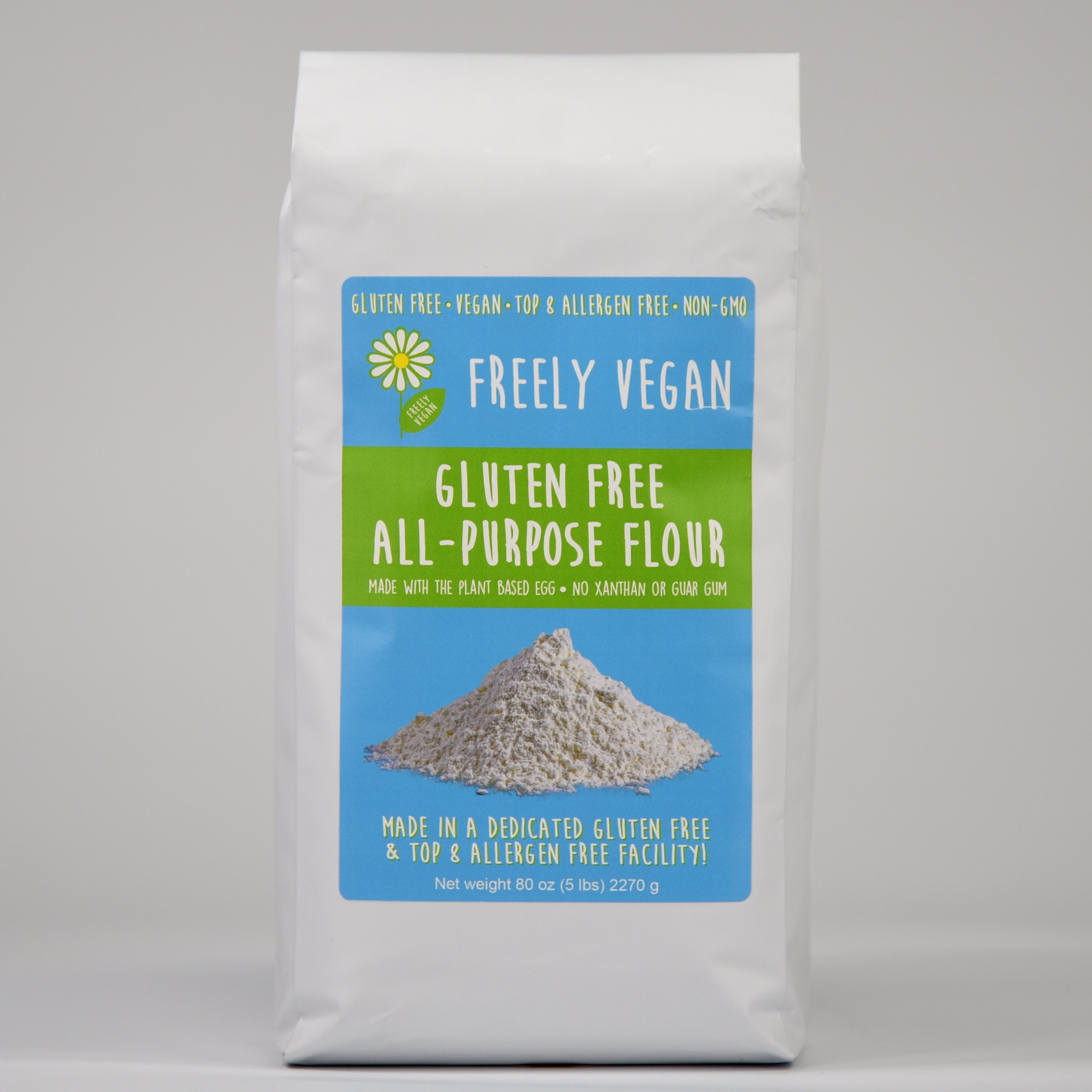
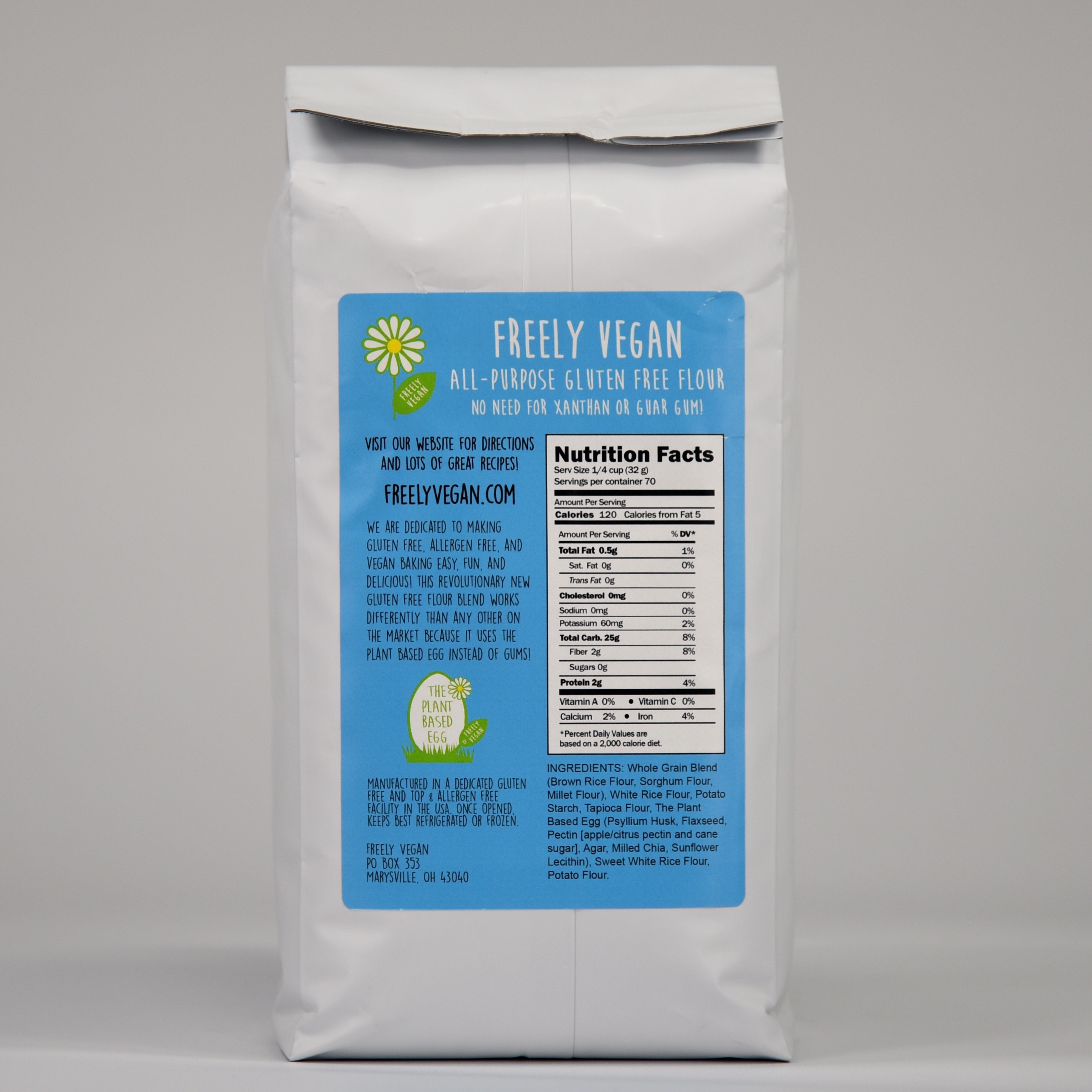
Previous Update (August 2018): Be sure to check out my newest two-ingredient flour blend! It makes amazing yeast breads and works very well in most of my recipes! I do slightly prefer blends one and two below for muffins and quick breads and blend 10 for brownies. But, if you want to use just one flour blend for everything, definitely use my two-ingredient flour!
I was diagnosed with celiac disease six and a half years ago, and have tried most of the gluten free flour blends on the market. Some work ok, but they all have xanthan and/or guar gums added (or require that you add them) and that gives a less than satisfactory result much of the time. I started making my own GF flour blends in September 2012, and it became my passion to create the perfect blend.
Several thousands of hours of testing later, I finally had an excellent blend figured out! Then I went vegan and had to learn how to bake with vegan ingredients. Butter and milk were easy enough to replace, but eggs were another story! Eggs provide a lot of structure in gluten free baking, but I was no longer willing to use them and had to find an alternative that really worked.
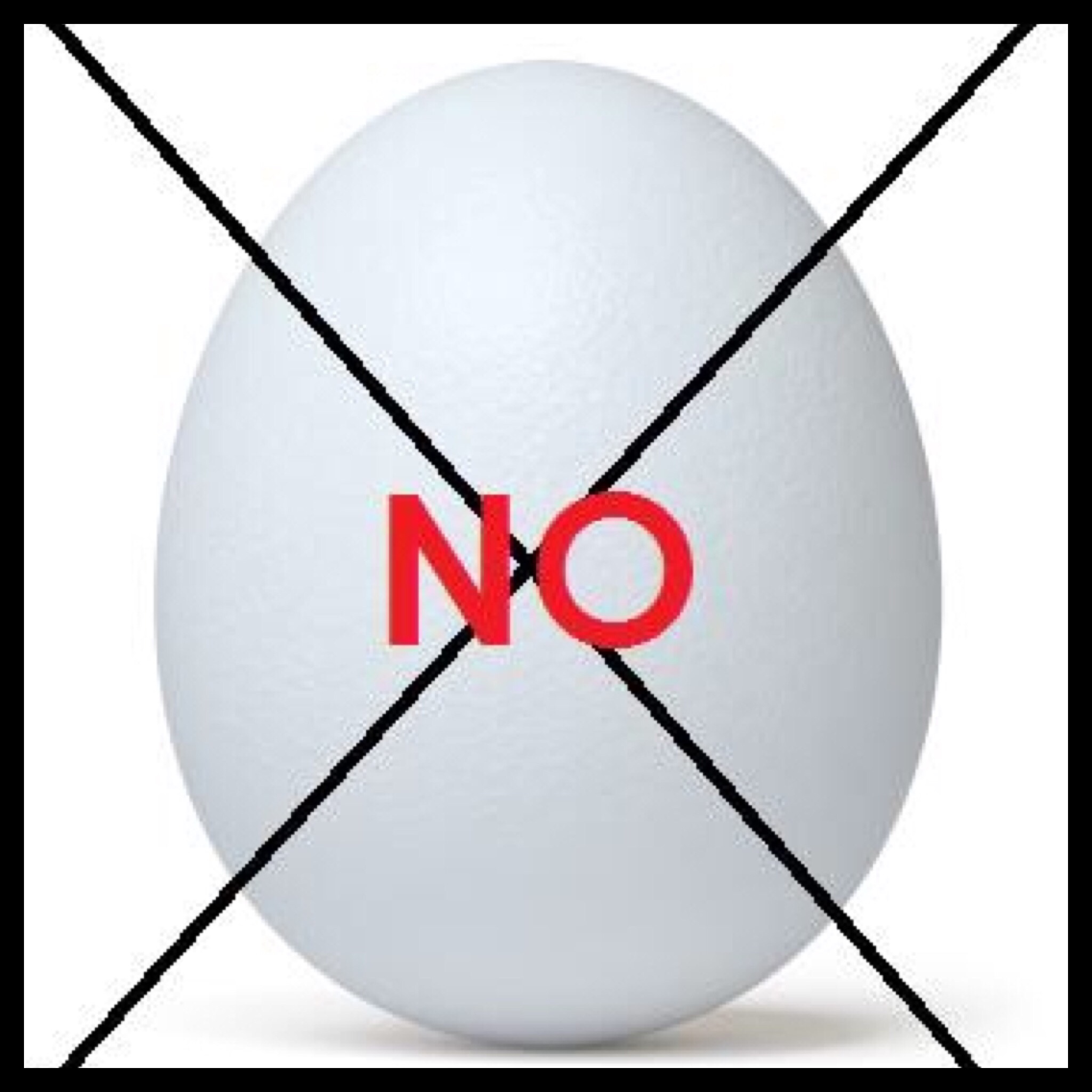
So, I tried all of the commercially available egg replacements plus all of the homemade ones like applesauce and flax eggs. None of them worked the way I wanted them to and many were just complete failures. Breads and cakes were dense and gummy, brownies wouldn’t set, and cookies were either too hard or spread all over the pan! This was so frustrating that I decided to come up with my own egg replacement!
I figured that while no one choice like chia, flax, psyllium, pectin, or agar worked well on its own, they might work better together. I was right, but it took hundreds of hours of testing to find the perfect balance. The end result was The Plant Based Egg, and I knew I had to make it available to everyone! You can order it from Amazon and Freely Vegan.
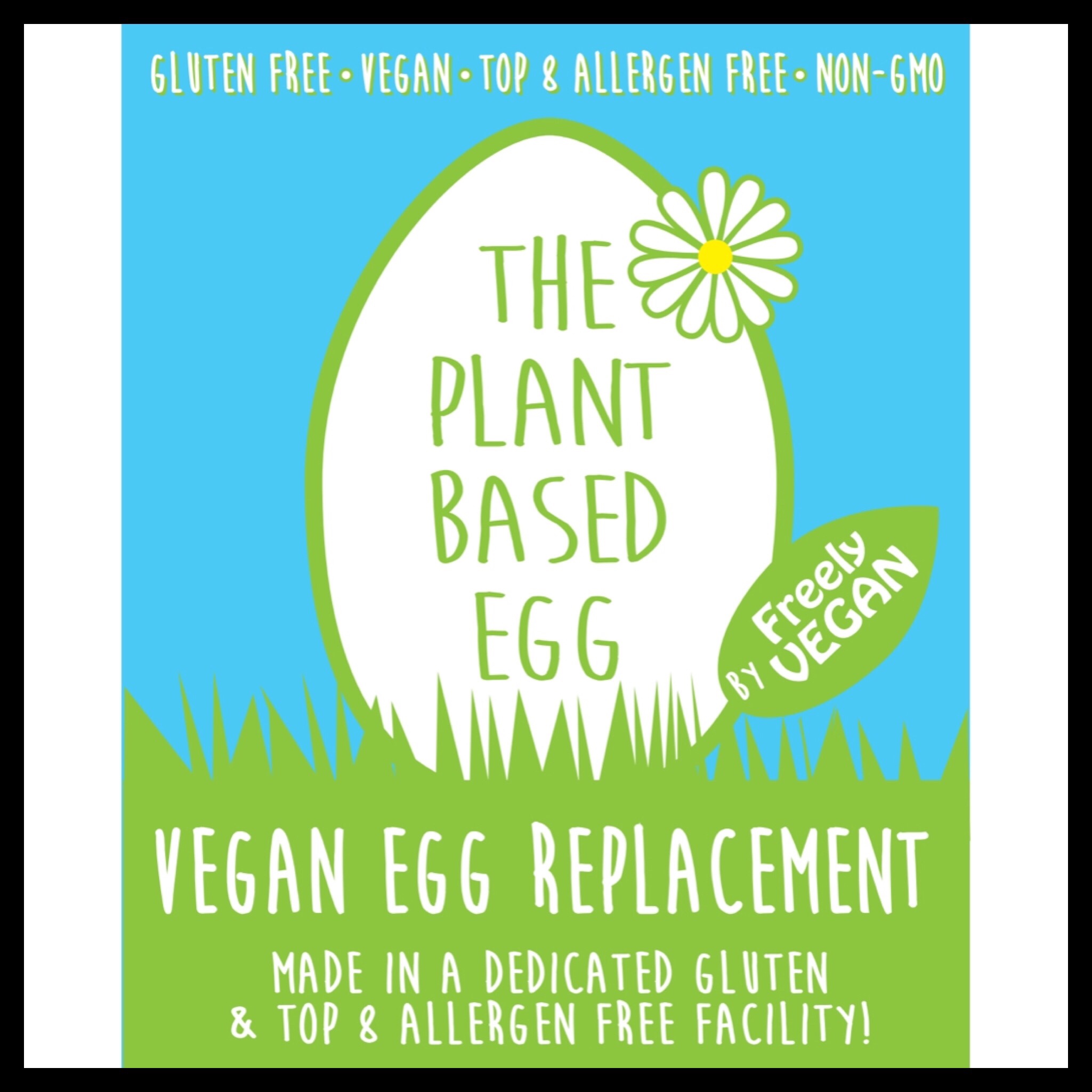
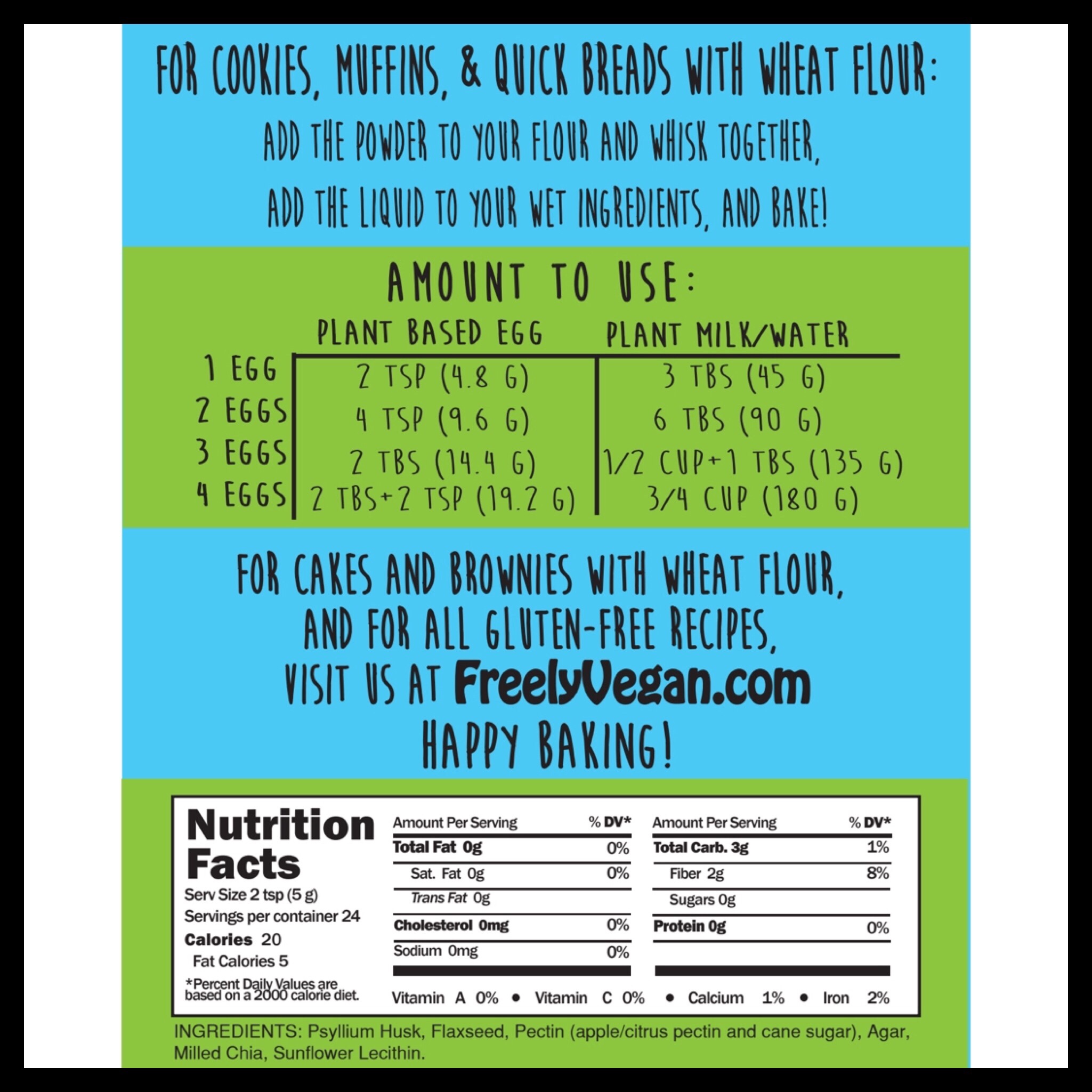
However, just adding The Plant Based Egg to my old GF flour blend (or to any blend that contains xanthan or guar gum) didn’t give optimal results. That is because The Plant Based Egg does the work of both the eggs and the gums! So, you need to use a GF flour blend without any added gums. There are a few on the market, and I will show you how to use them in blends one through six below. You can also make a wide variety of GF flour blends that fit your specific dietary needs. Grain, potato, rice, or nut free? I’ve got a blend for you!
I spent another couple thousand hours of testing to perfect my favorite flour blend with The Plant Based Egg already added, and that will be available to purchase online as well in a few months! (See new update at the top of this post!) For now, though, you will need to make one of the following flour blends if you want to make my recipes. I spent several months testing these blends, and each one works very well!
Each bag of The Plant Based Egg contains 120 g of product. The flour blends below have between 5.8% and 6.4% of their total weight as The Plant Based Egg. This means that each bag of The Plant Based Egg will make between 1,875 grams (4.1 lbs) and 2,070 grams (4.5 lbs) of gluten free flour. This amount of the Plant Based Egg in the flour blends subs for both the usual gums in the flour and for the eggs in a recipe.
*Please also note that blends one and two should not be used for any yeast bread recipes as the dough does not rise well enough with those two blends. Also, I have not tested any of the following blends in my full-size sandwich bread recipes. Blends three through sixteen work well in rolls, though, so they may work for larger breads too – I just can’t say for sure yet.
I highly recommend that you get a digital kitchen scale before you make your own GF flours. The first six blends below will work ok without a scale, but you will never get the baking perfection that you can achieve when you weigh your ingredients! For all flour and starch measurements, spoon the ingredient into the measuring cup or spoon and then level with a straight edge. To measure small amounts of The Plant Based Egg (up to one tablespoon), you scoop with the measuring spoon and then level with a straight edge. For larger amounts (more than one tablespoon), you spoon the mixture into the measuring cup and then level. Scooping amounts larger than one tablespoon will result in your using too much of The Plant Based Egg. All measurements will be much less accurate than weights, however, so use a scale if you want the best results!
This is the scale I like best because it has a 3000 gram capacity, weighs to 0.1 grams, and it plugs in (which saves batteries and prevents the scale from shutting off in the middle of weighing an ingredient.)
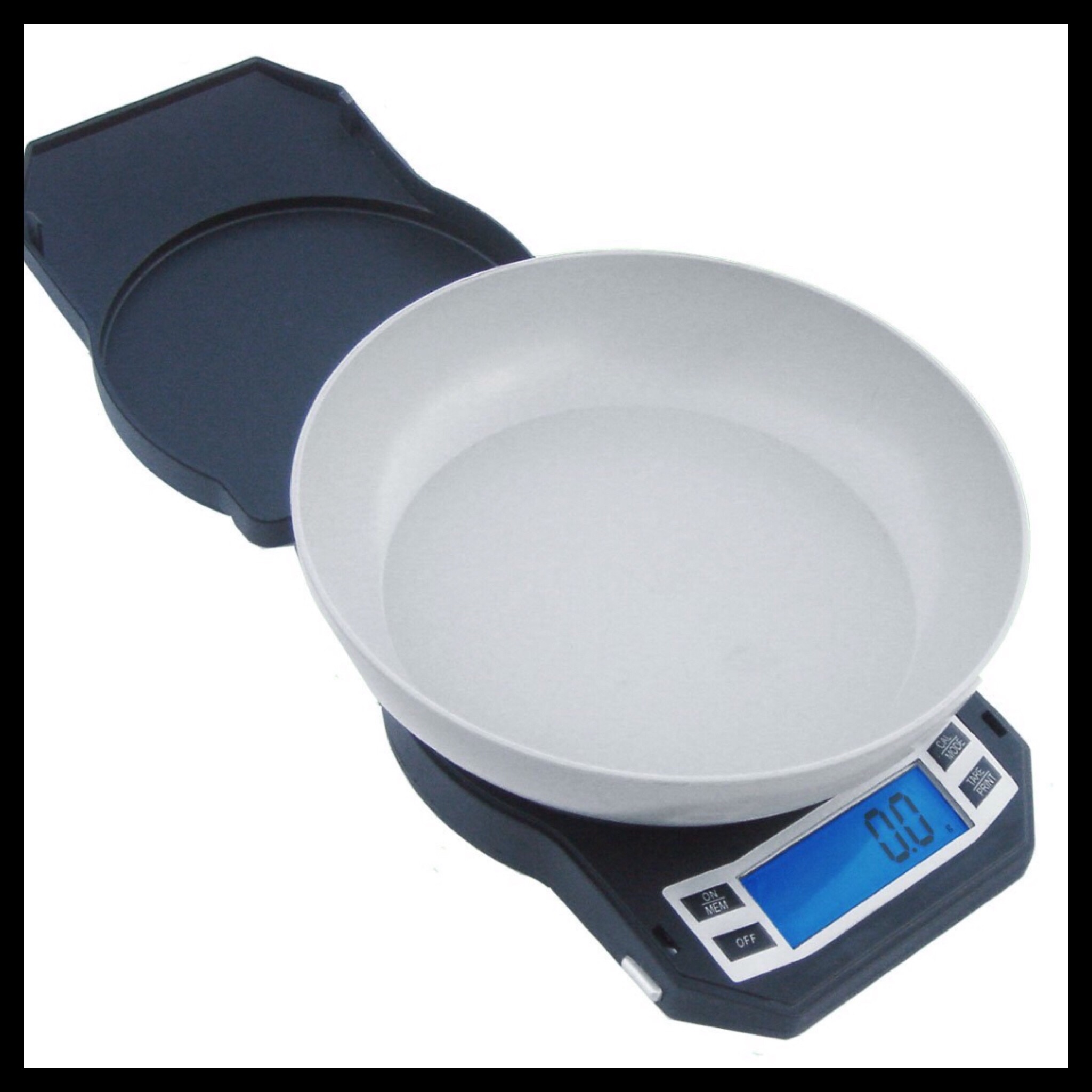
I order my flours from Vitacost whenever possible because they have great prices, but you should be able to find most of them at your local health food store. I use Bob’s Red Mill brand, except where stated otherwise. You may get slightly different results if you use another brand. You will need to use another brand if you are allergic to soy or nuts, though, because the Bob’s Red Mill flours are manufactured in a facility that also uses tree nuts and soy. Also, please note that the blends with oat flour give a fantastic texture to your baked goods, but will bake up darker than the other blends. This is not usually an issue, but can be when you want a paler result such as in a white sandwich roll.
Here are photos of the fourteen different flours I use, but you will only need between two and six of them for any one blend:
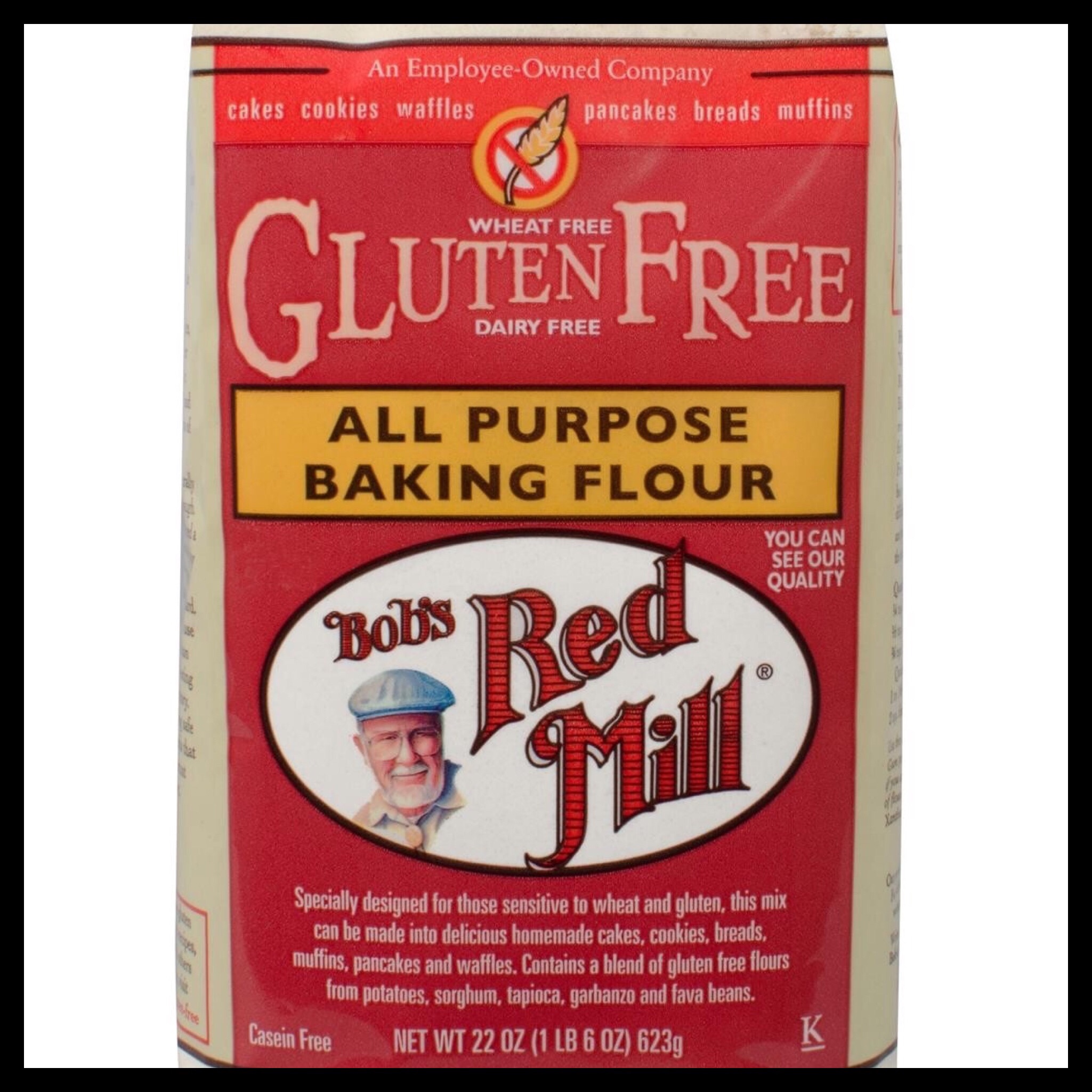
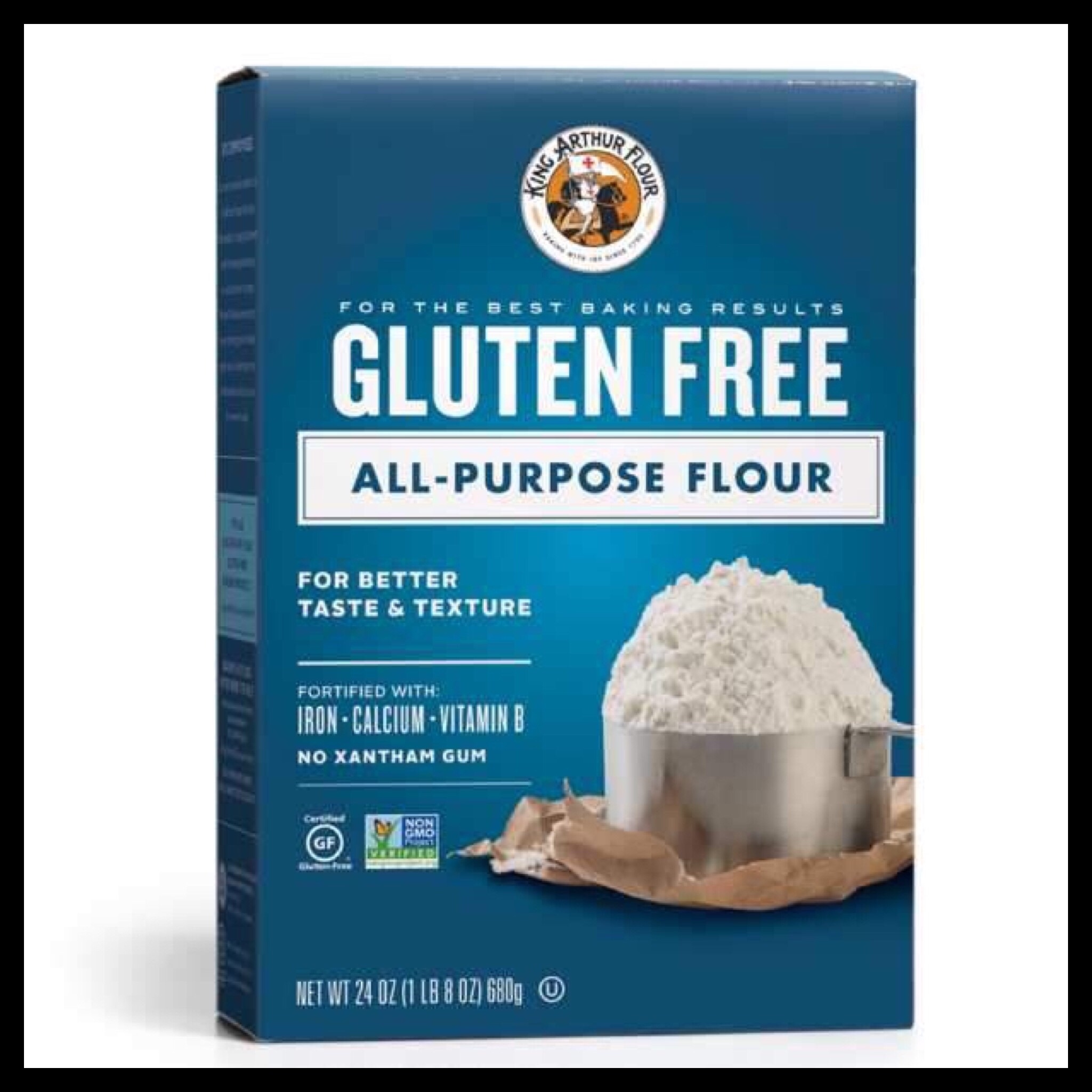
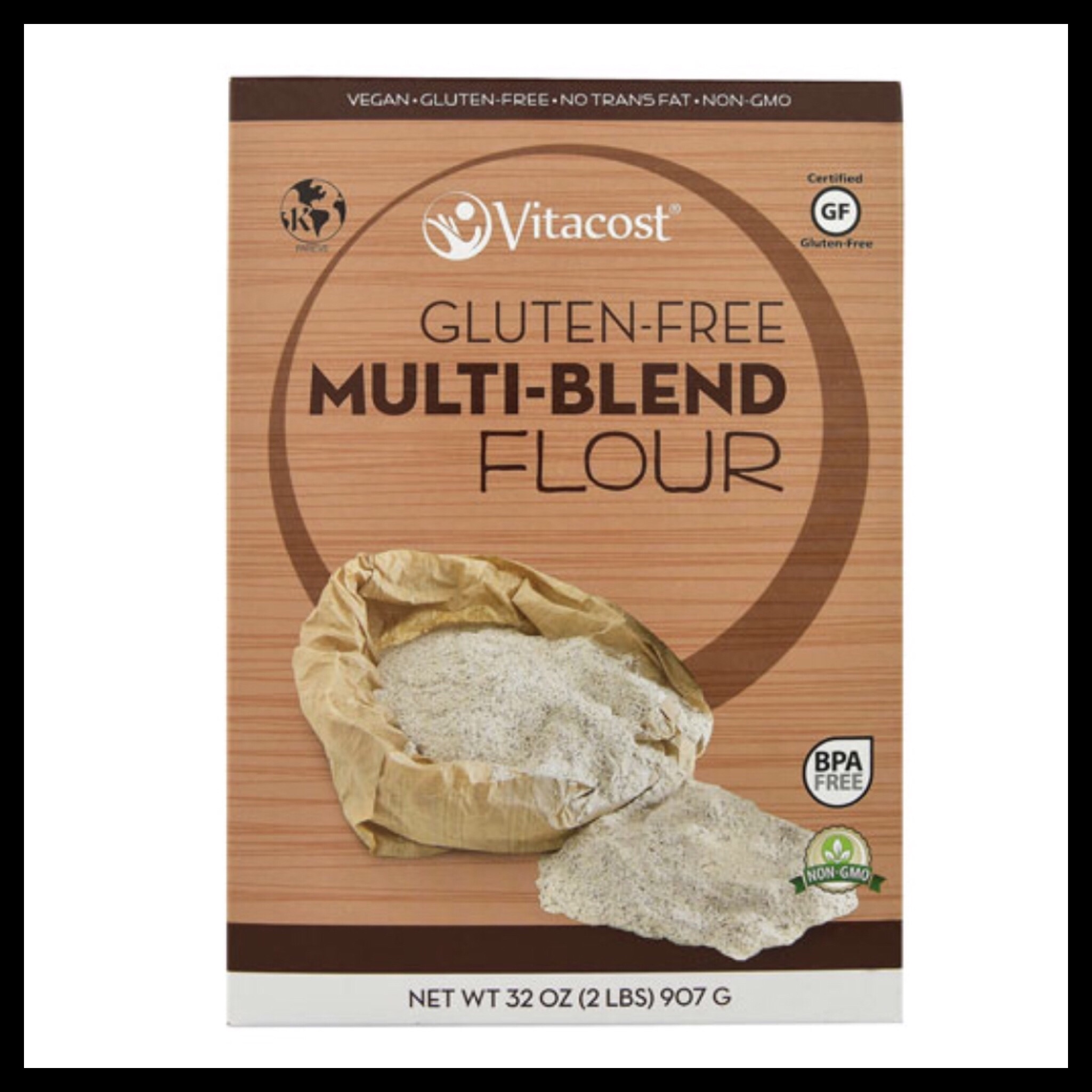
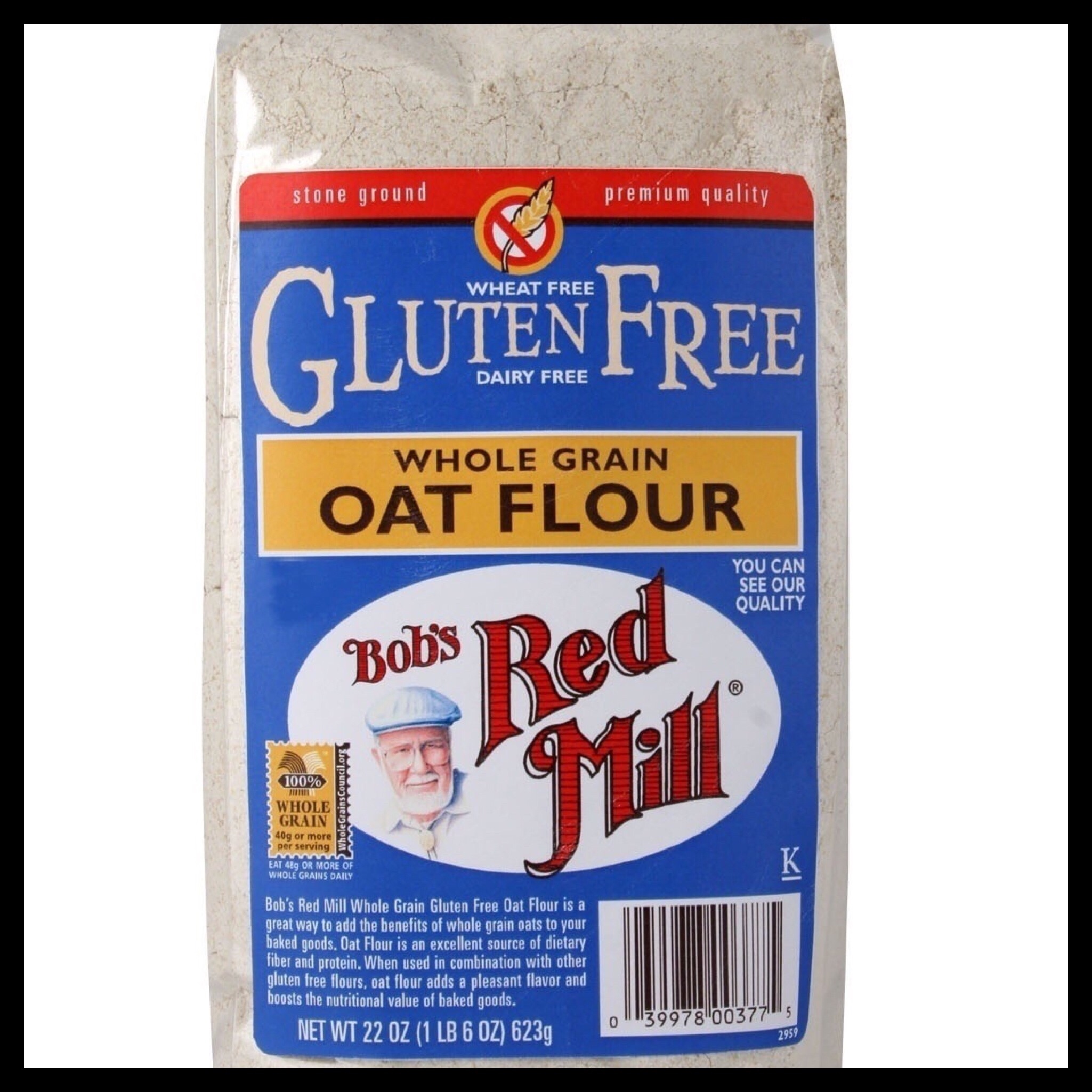
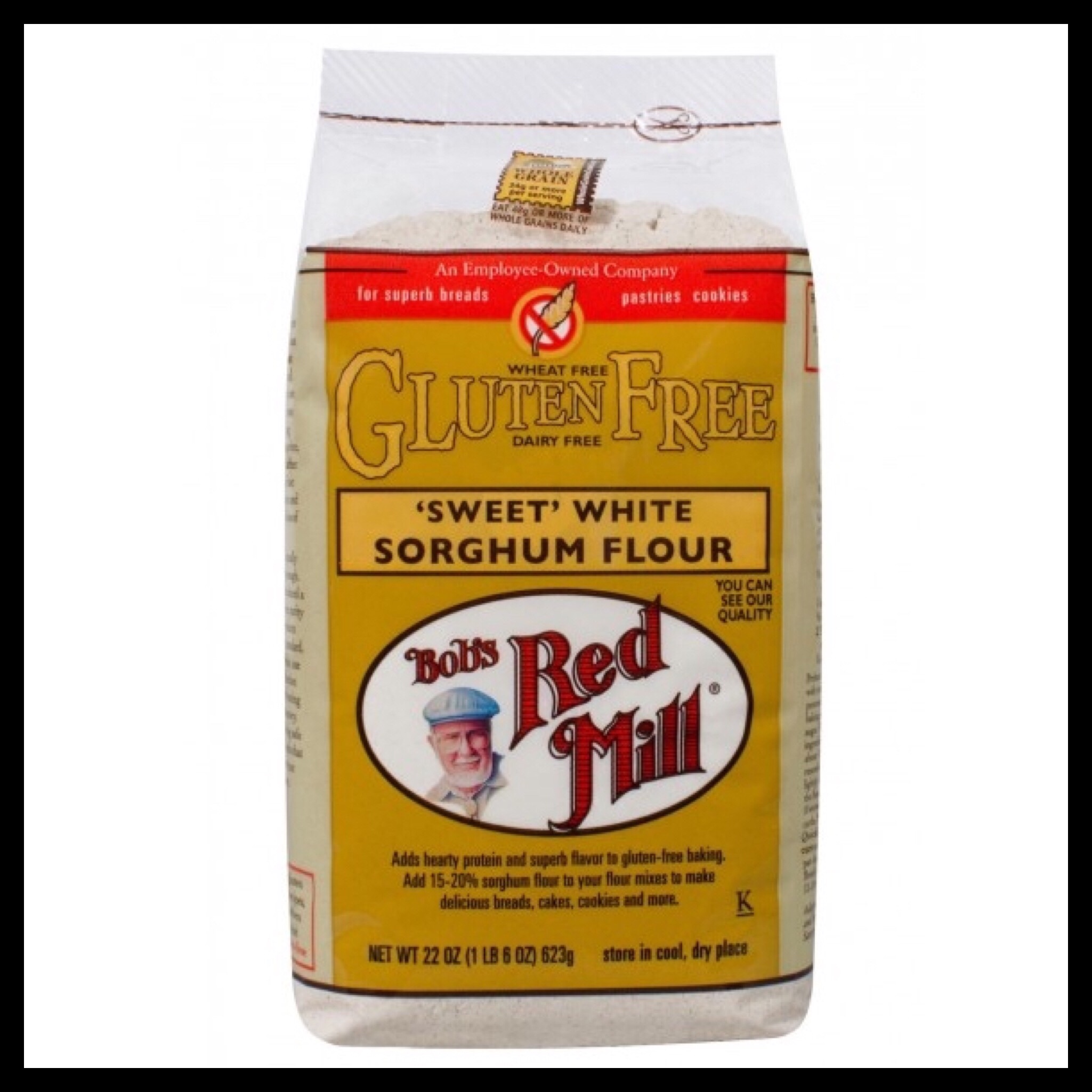
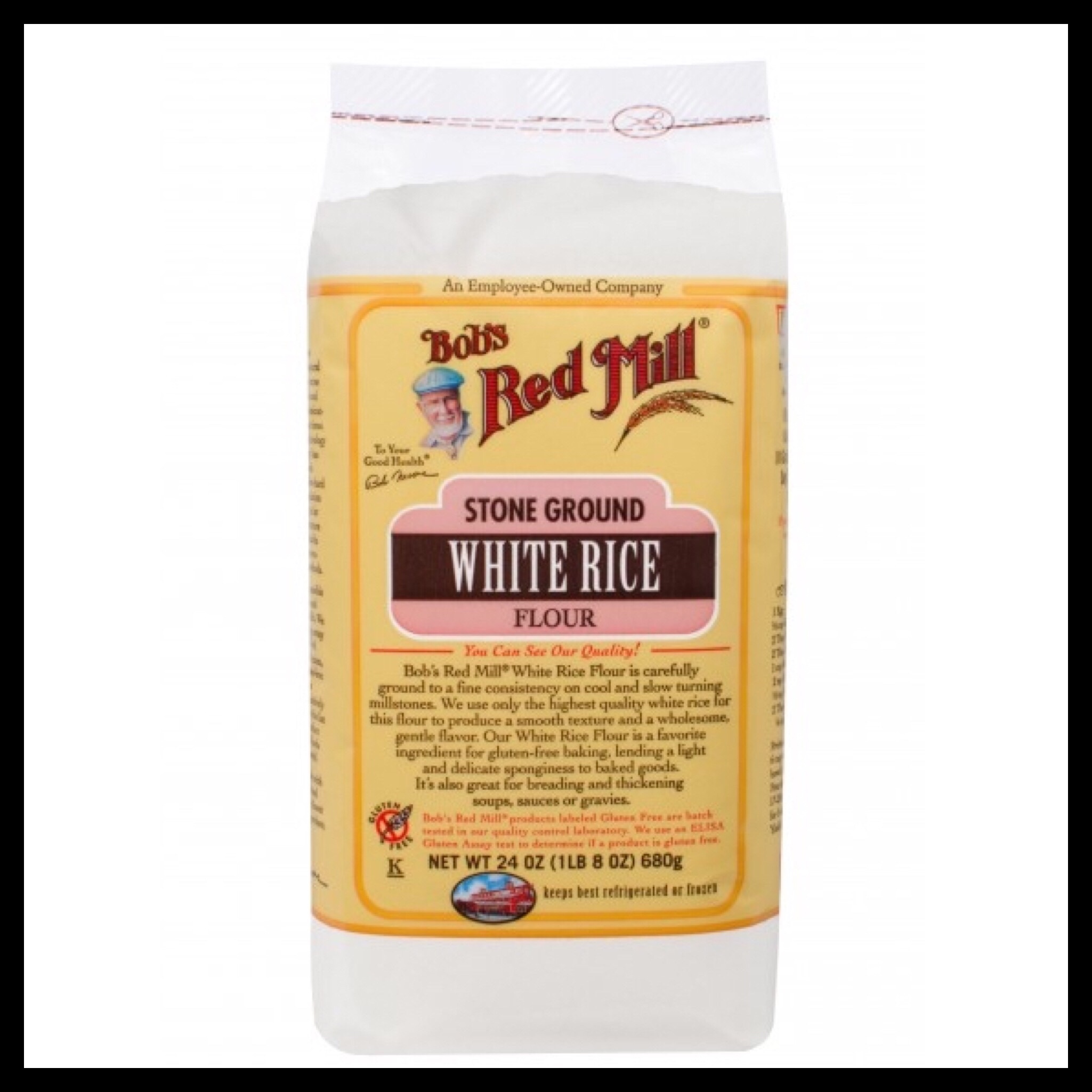
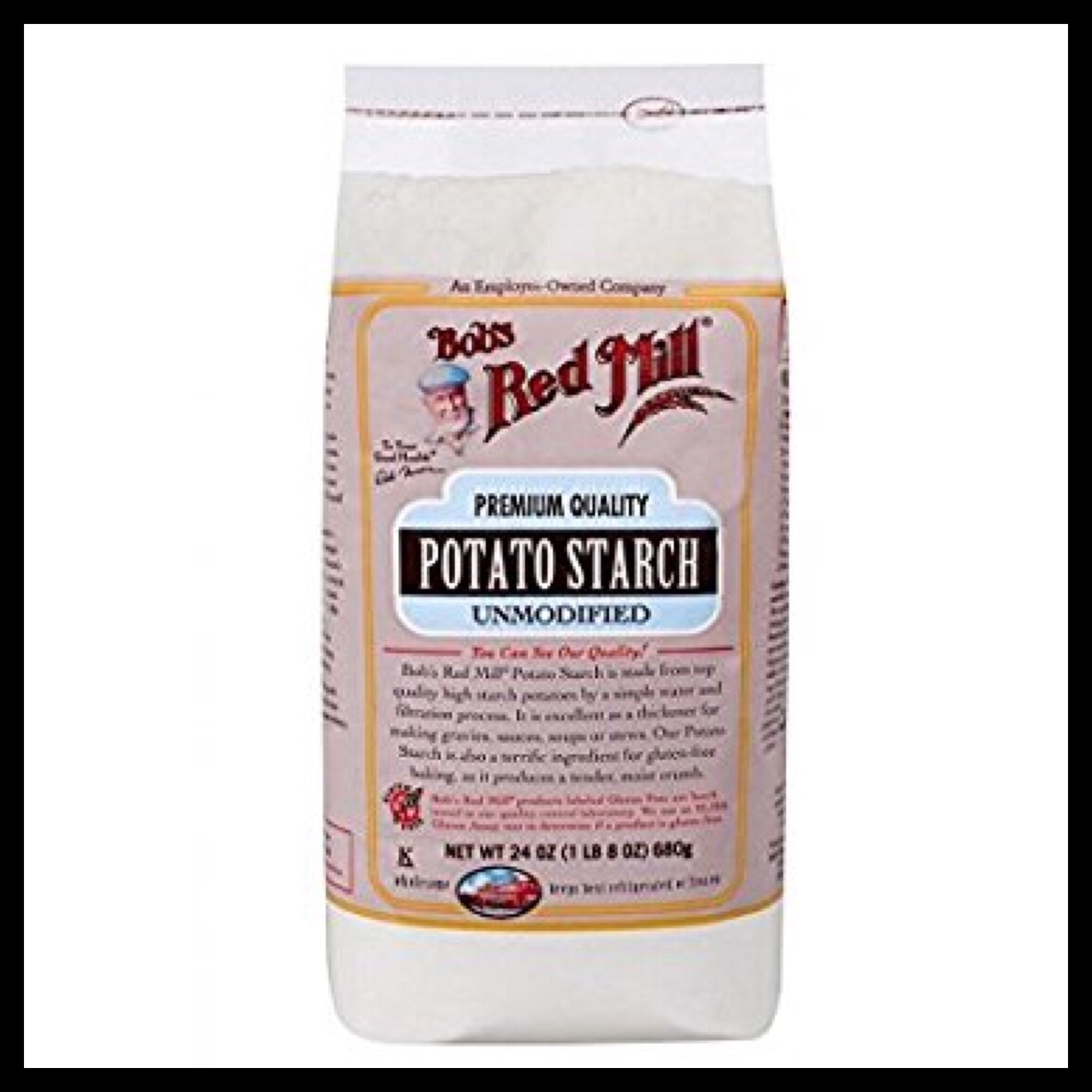
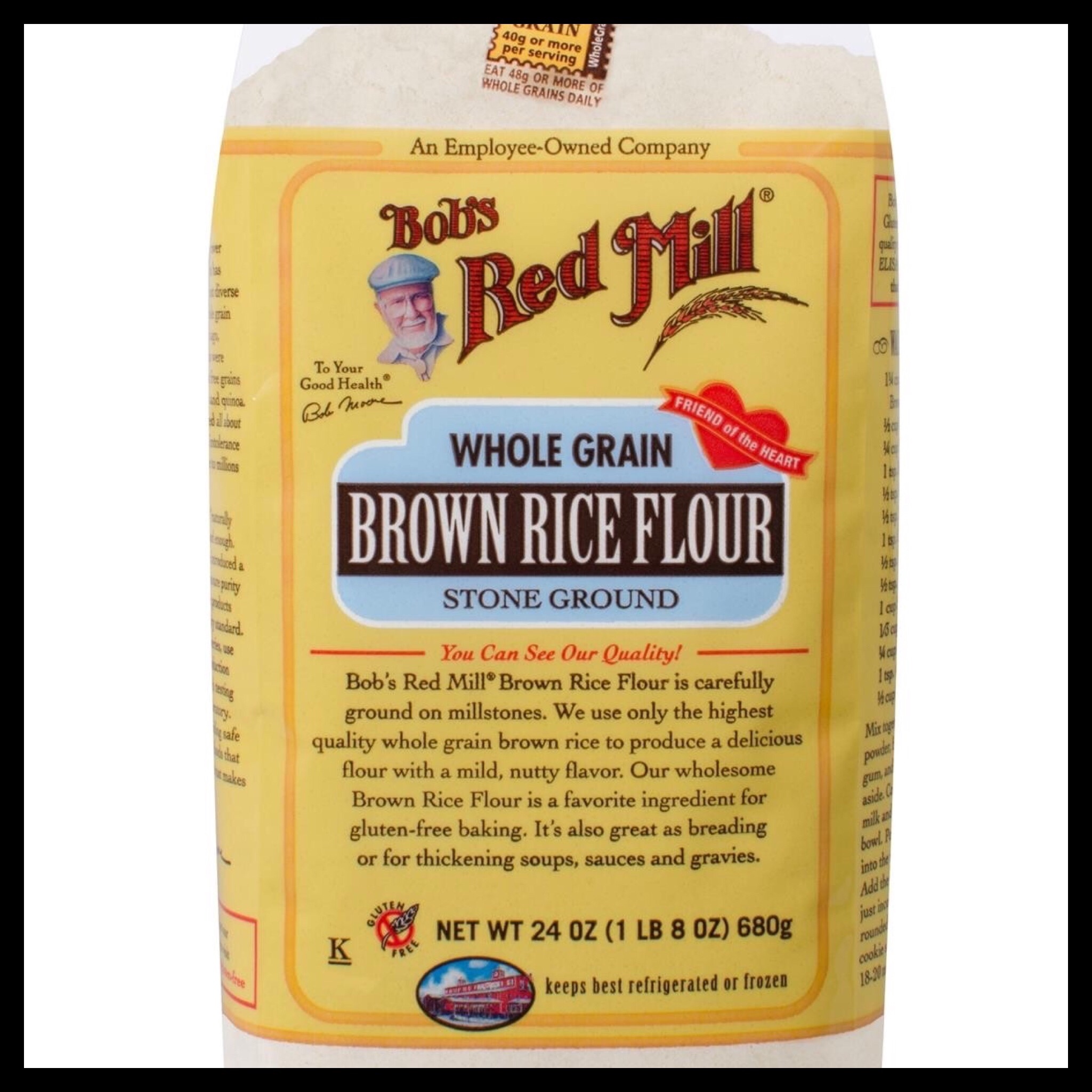
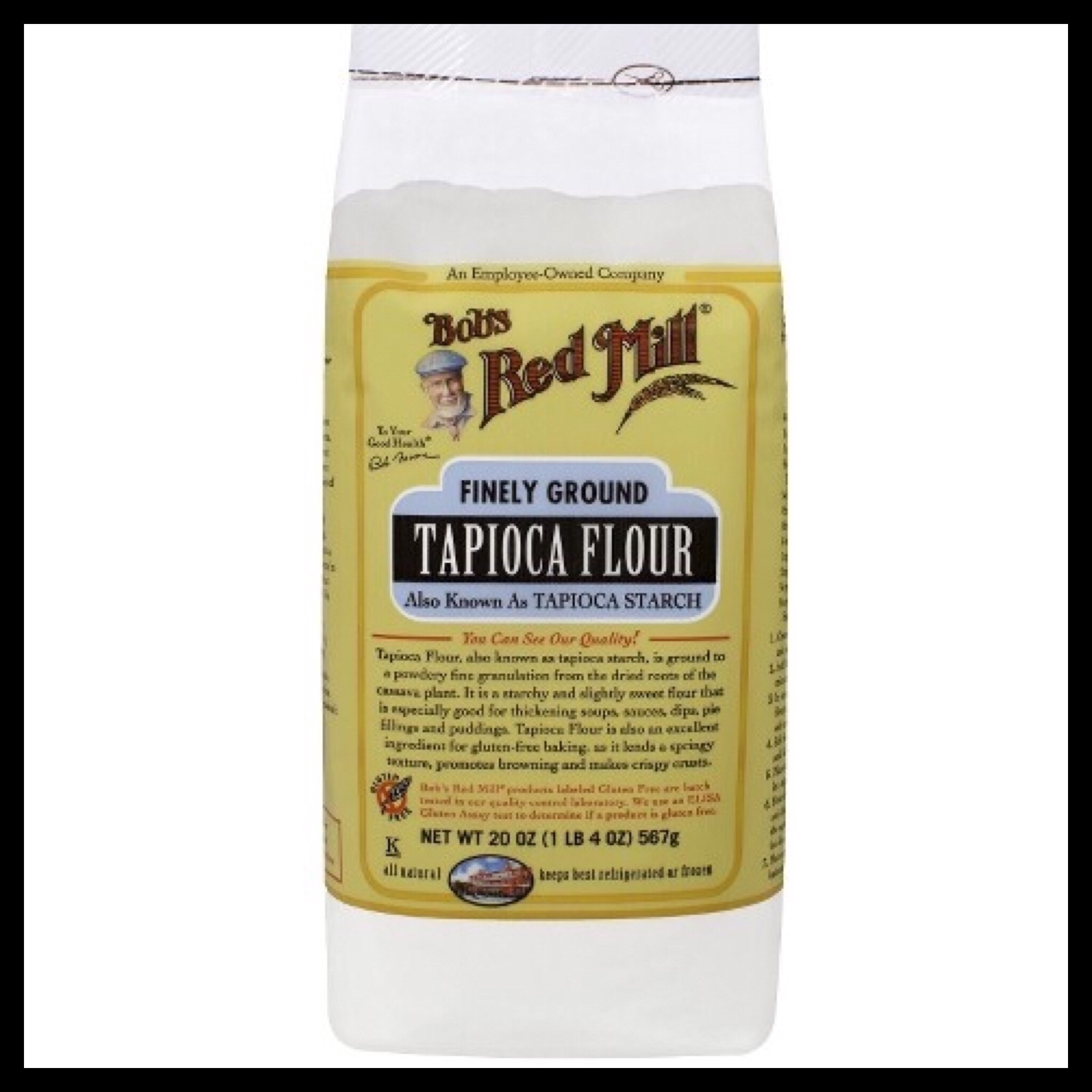
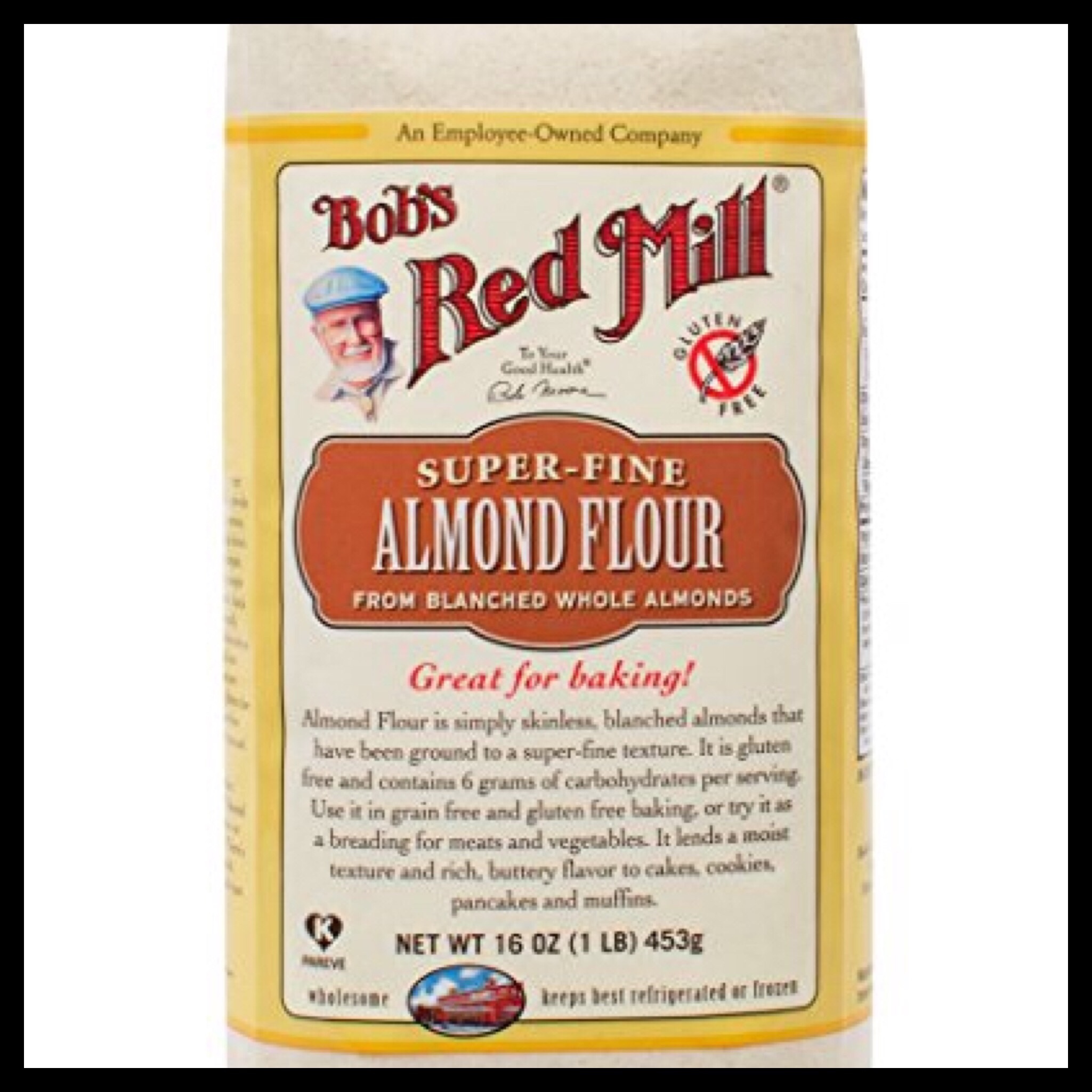
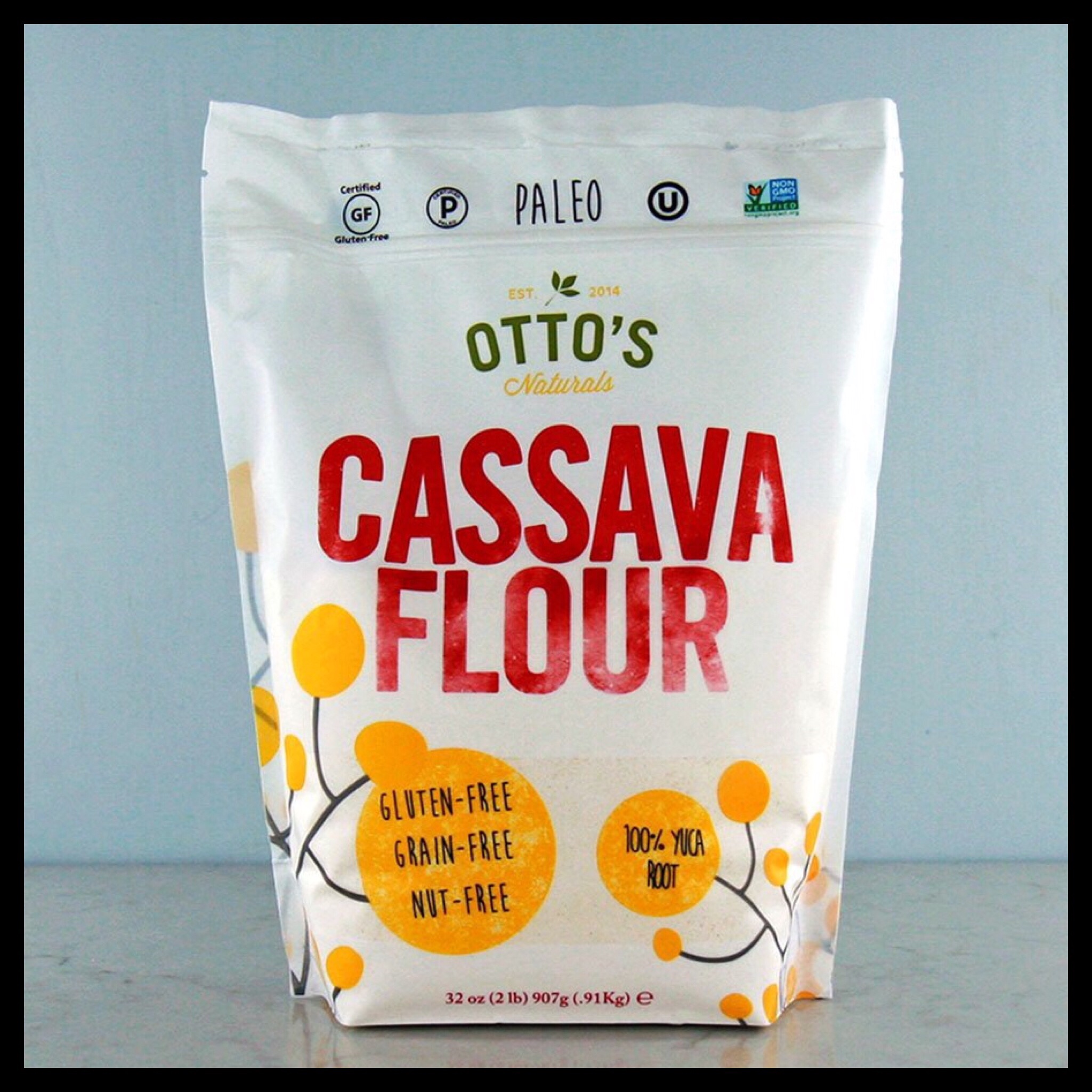
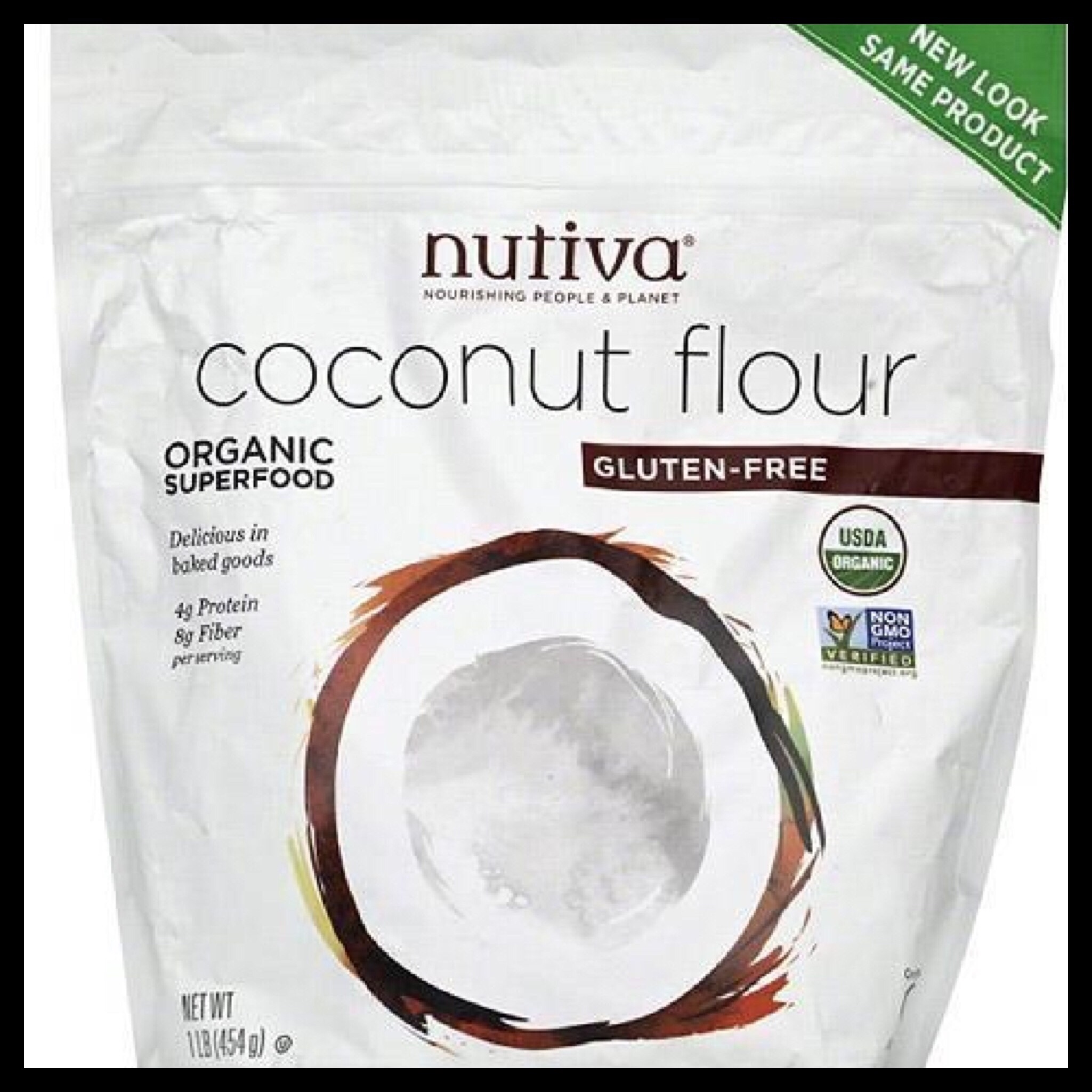
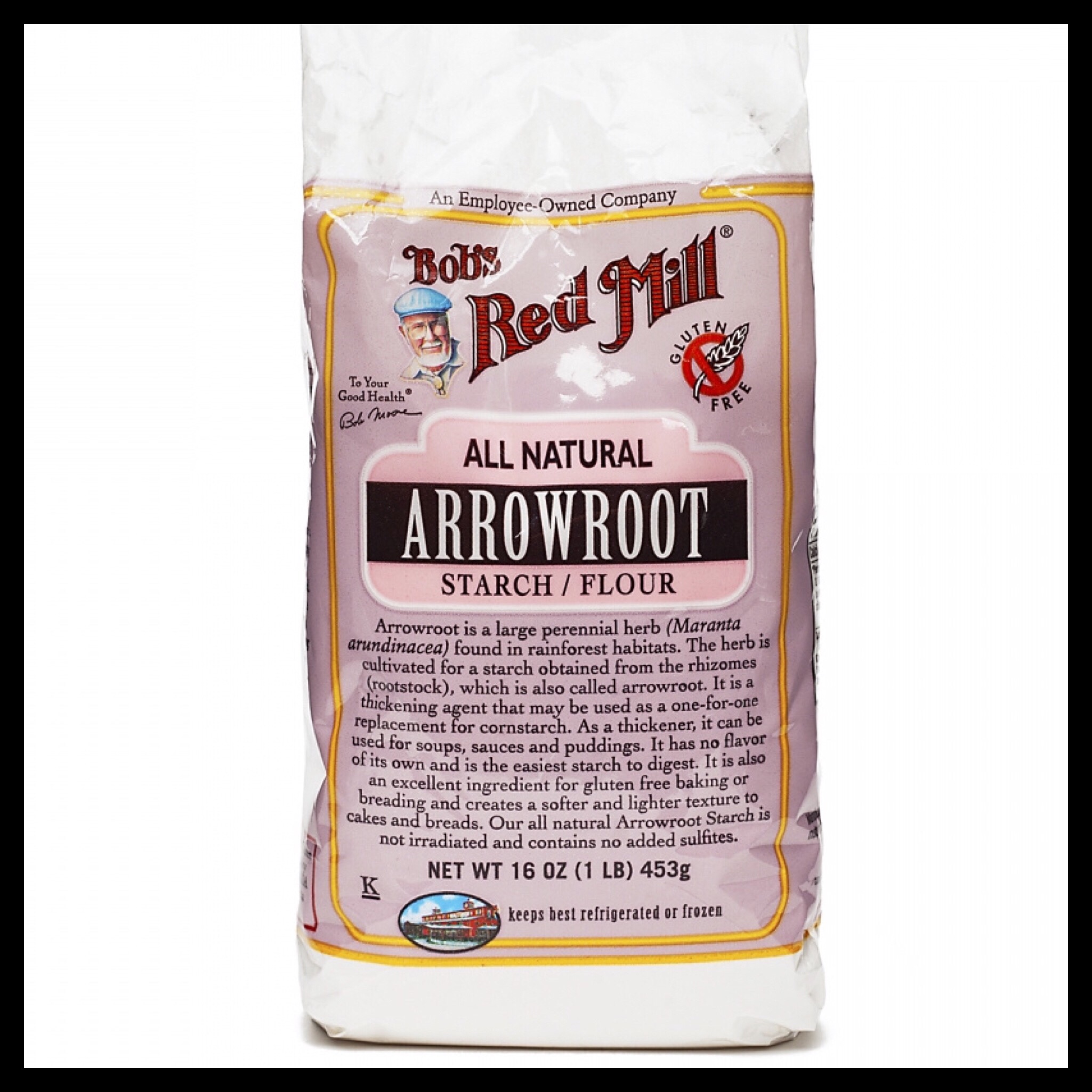
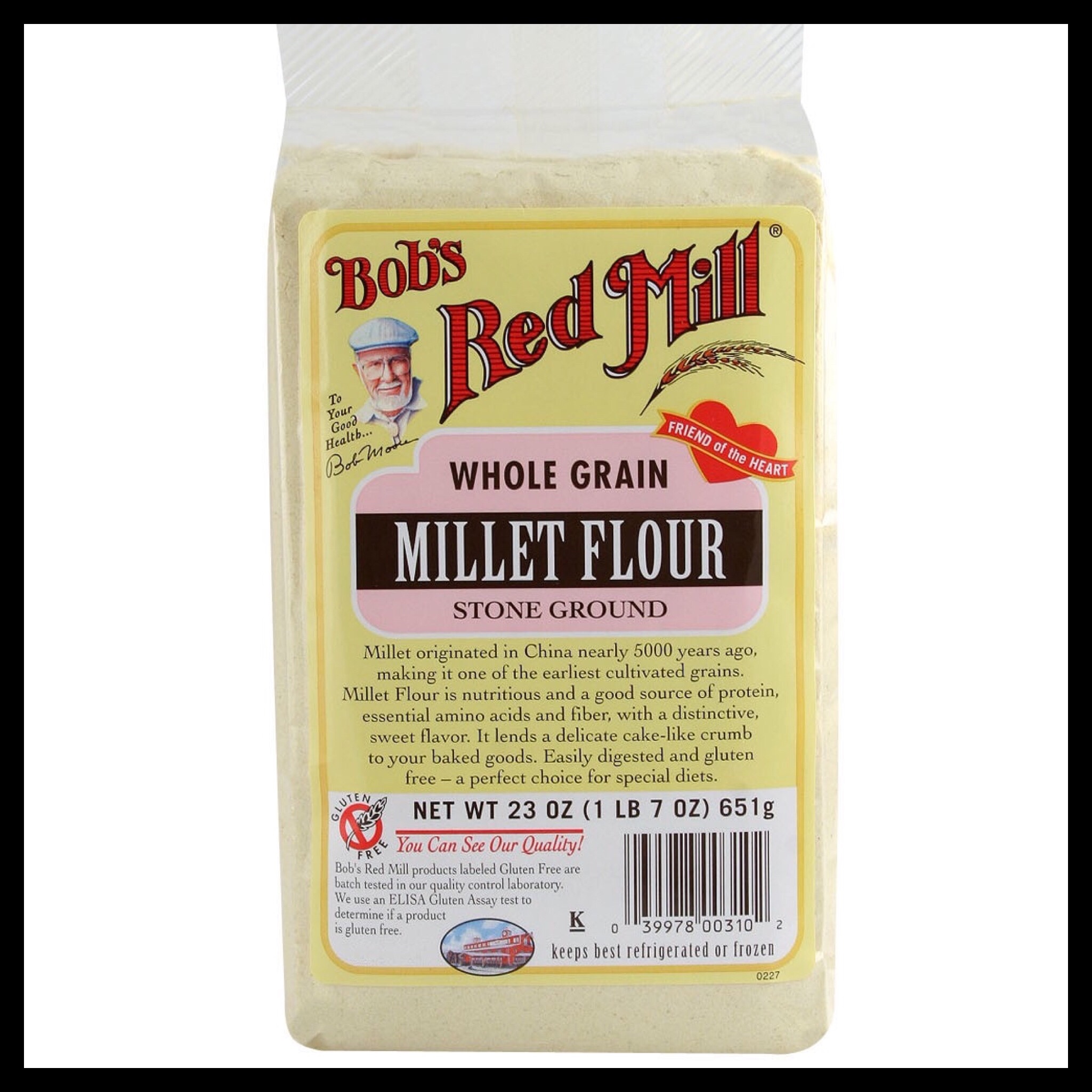
My first six blends use one or two premade gluten free flour blends as the base. You use the entire bag or box of these flour blends, so they are less likely to have inaccuracies from measuring. Some ingredients must still be measured, however, so I recommend using a scale for those! Here are the recipes!
BLEND ONE (not for yeast breads or brownies, but my favorite for muffins and quick breads):
- 22 oz bag Bob’s Red Mill All Purpose Baking Flour
- 24 oz box King Arthur Gluten Free All-Purpose Flour
- 89.2 grams (3/4 c + 2 TBS) The Plant Based Egg
(By percent, this is 44.8% BRM, 48.8% KA, and 6.4% PBE)
BLEND TWO (not for yeast breads or brownies, but my favorite for muffins and quick breads):
- 22 oz bag Bob’s Red Mill All Purpose Baking Flour
- 32 oz box Vitacost Gluten-Free Multi-Blend Flour
- 105 grams (1 c + 2 tsp) The Plant Based Egg
(By percent, this is 38.1% BRM, 55.5% VCB and 6.4% PBE)
BLEND THREE:
- 32 oz box Vitacost Gluten-Free Multi-Blend Flour
- 214.3 grams (1 3/4 c + 2 tsp) Bob’s Red Mill GF Oat Flour
- 69.0 grams (5/8 c + 2 1/2 tsp) The Plant Based Egg
(By percent, this is 76.2% VCB, 18.0% Oat and 5.8% PBE)
BLEND FOUR:
- 32 oz box Vitacost Gluten-Free Multi-Blend Flour
- 294.7 grams (2 3/8 c + 1 TBS + 1 tsp) Bob’s Red Mill Sorghum Flour
- 79.5 grams (3/4 c + 2 tsp) The Plant Based Egg
(By percent, this is 70.8% VCB, 23.0% Sorghum and 6.2% PBE)
BLEND FIVE:
- 24 oz box King Arthur Gluten Free All-Purpose Flour
- 184.4 grams (1 1/2 c + 2 tsp) Bob’s Red Mill GF Oat Flour
- 57.2 grams (1/2 c + 1 TBS) The Plant Based Egg
(By percent, this is 73.8% KA, 20.0% Oat and is 6.2% PBE)
BLEND SIX:
- 24 oz box King Arthur Gluten Free All-Purpose Flour
- 246.9 grams (2 c + 1 TBS) Bob’s Red Mill Sorghum Flour
- 60.2 grams (1/2 c + 1 TBS + 1 1/4 tsp) The Plant Based Egg
(By percent, this is 68.9% KA, 25.0% Sorghum and 6.1% PBE)
The remaining blends absolutely require a scale to weigh the ingredients. They also require a bit of math. To calculate the number of grams of each ingredient you need, multiply the amount of flour you want to make by the percentage of each ingredient. I’ll use the first two ingredients of blend seven below as an example. Let’s say you need 450 grams of flour. For the white rice flour, multiply 450 grams by 0.31, which is 139.5 grams. (31.0% = 0.31). The oat flour would be 450 x 0.18, which is 81.0 grams.
If this seems too complicated, stick to multiples of 100 grams, and multiply the percentage by the multiple of 100 that you need. For example, for the white rice in 500 grams of blend seven, you would multiply 31 by 5, which is 155 grams. The oat flour would be 18 x 5 = 90 grams.
Or, you can always make 1,000 grams of flour, and just move the decimal point over one place to the right for each percentage. For example, 1,000 grams of blend seven would use 310 grams of white rice flour and 180 grams of oat flour. (This is the only method to use if you have a scale that reads to 1.0 grams and not to 0.1 grams.)
Always check your work and make sure that the total of all the ingredients equals the amount of flour that you want to make!
BLEND SEVEN (Oat & Brown Rice):
- 31.0% Bob’s Red Mill White Rice Flour
- 18.0% Bob’s Red Mill GF Oat Flour
- 17.0% Bob’s Red Mill Potato Starch
- 15.0% Bob’s Red Mill Brown Rice Flour
- 13.0% Bob’s Red Mill Tapioca Flour
- 6.0% The Plant Based Egg
BLEND EIGHT (Sorghum & Brown Rice):
- 31.0% Bob’s Red Mill White Rice Flour
- 18.0% Bob’s Red Mill Sorghum Flour
- 17.0% Bob’s Red Mill Potato Starch
- 15.0% Bob’s Red Mill Brown Rice Flour
- 13.0% Bob’s Red Mill Tapioca Flour
- 6.0% The Plant Based Egg
BLEND NINE (Sorghum & Oat):
- 31.0% Bob’s Red Mill White Rice Flour
- 18.0% Bob’s Red Mill Sorghum Flour
- 17.0% Bob’s Red Mill Potato Starch
- 15.0% Bob’s Red Mill GF Oat Flour
- 13.0% Bob’s Red Mill Tapioca Flour
- 6.0% The Plant Based Egg
BLEND TEN (Grain Free) – my favorite for brownies and it is great in all of my recipes except for full-size sandwich loaves:
- 30.5% Bob’s Red Mill Almond Flour
- 20.5% Bob’s Red Mill Tapioca Flour
- 19.0% Bob’s Red Mill Potato Starch
- 16.5% Otto’s Cassava Flour
- 7.5% Nutiva Coconut Flour
- 6.0% The Plant Based Egg
BLEND ELEVEN (Rice & Potato Free):
- 23.0% Bob’s Red Mill Tapioca Flour
- 17.5% Bob’s Red Mill GF Oat Flour
- 16.5% Otto’s Cassava Flour
- 15.0% Bob’s Red Mill Sorghum Flour
- 15% Bob’s Red Mill Almond Flour
- 7.0% Bob’s Red Mill Arrowroot Starch
- 6.0% The Plant Based Egg
BLEND TWELVE (Rice Free):
- 23.0% Bob’s Red Mill Potato Starch
- 17.5% Bob’s Red Mill GF Oat Flour
- 15.5% Otto’s Cassava Flour
- 15.0% Bob’s Red Mill Almond Flour
- 12.0% Bob’s Red Mill Sorghum Flour
- 11.0% Bob’s Red Mill Tapioca Starch
- 6.0% The Plant Based Egg
BLEND THIRTEEN (Potato Free w/ Sorghum & Oat):
- 31.0% Bob’s Red Mill White Rice Flour
- 23.0% Bob’s Red Mill Tapioca Flour
- 18.0% Bob’s Red Mill Sorghum Flour
- 15.0% Bob’s Red Mill GF Oat Flour
- 7.0% Bob’s Red Mill Arrowroot Starch
- 6.0% The Plant Based Egg
BLEND FOURTEEN (Potato Free w/ Oat & Brown):
- 31.0% Bob’s Red Mill White Rice Flour
- 23.0% Bob’s Red Mill Tapioca Flour
- 18.0% Bob’s Red Mill GF Oat Flour
- 15.0% Bob’s Red Mill Brown Rice Flour
- 7.0% Bob’s Red Mill Arrowroot Starch
- 6.0% The Plant Based Egg
BLEND FIFTEEN (Potato Free w/ Sorghum & Brown):
- 31.0% Bob’s Red Mill White Rice Flour
- 23.0% Bob’s Red Mill Tapioca Flour
- 18.0% Bob’s Red Mill Sorghum Flour
- 15.0% Bob’s Red Mill Brown Rice Flour
- 7.0% Bob’s Red Mill Arrowroot Starch
- 6.0% The Plant Based Egg
BLEND SIXTEEN (Rice and Nut Free):
- 27.5% Bob’s Red Mill Potato Starch
- 19.0% Bob’s Red Mill Tapioca Flour
- 16.0% Otto’s Cassava Flour
- 12.0% Bob’s Red Mill GF Oat Flour
- 11.0% Bob’s Red Mill Millet Flour
- 8.5% Bob’s Red Mill Sorghum Flour
- 6.0% The Plant Based Egg
MIXING DIRECTIONS:
For all of the flour blends, add the first ingredient to a large mixing bowl. Next, add The Plant Based Egg and whisk well to combine. Then, you can add the remaining ingredients and whisk until evenly blended. For example, these are the steps for blend one:
Add the King Arthur flour to a large mixing bowl:
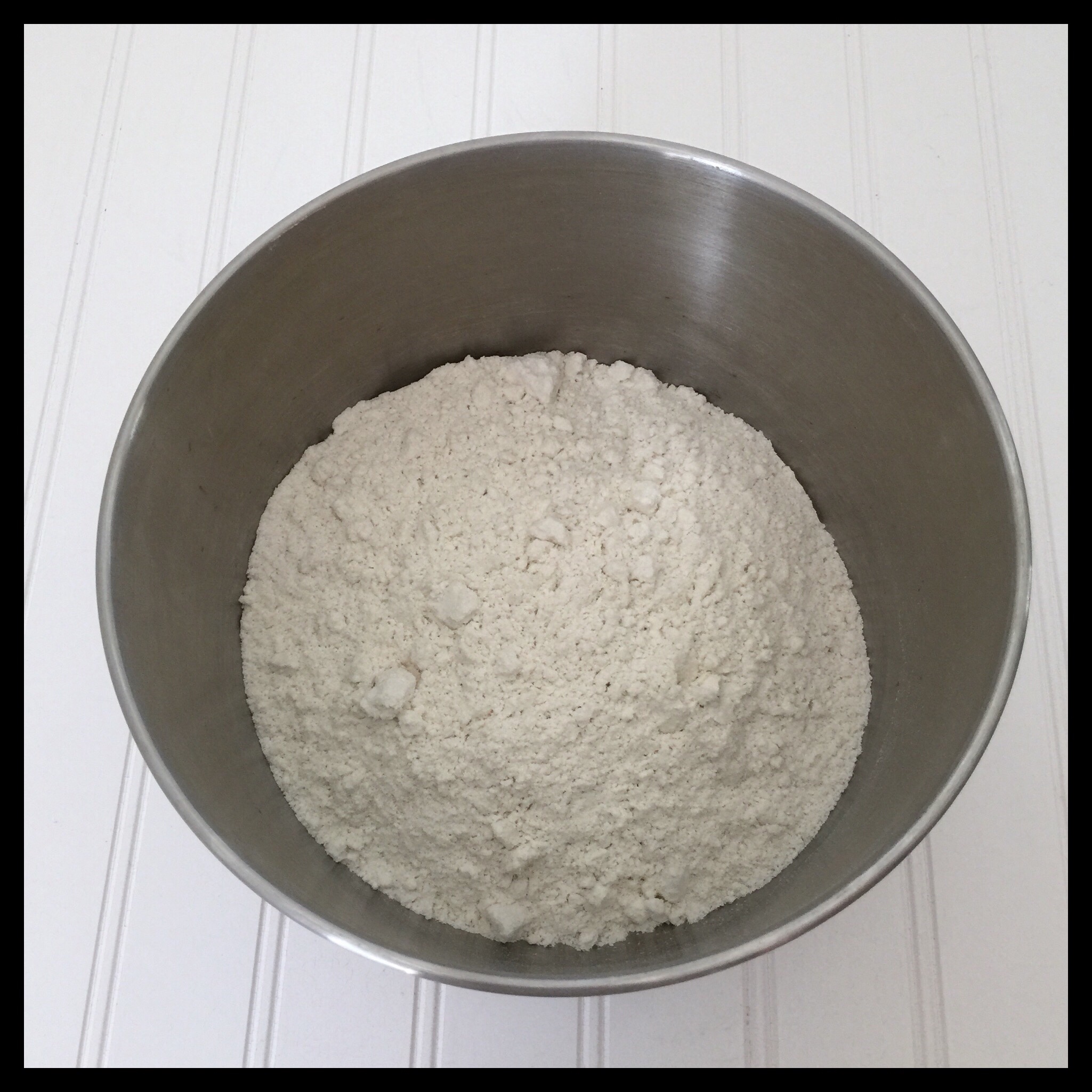
Add The Plant Based Egg, then whisk together:
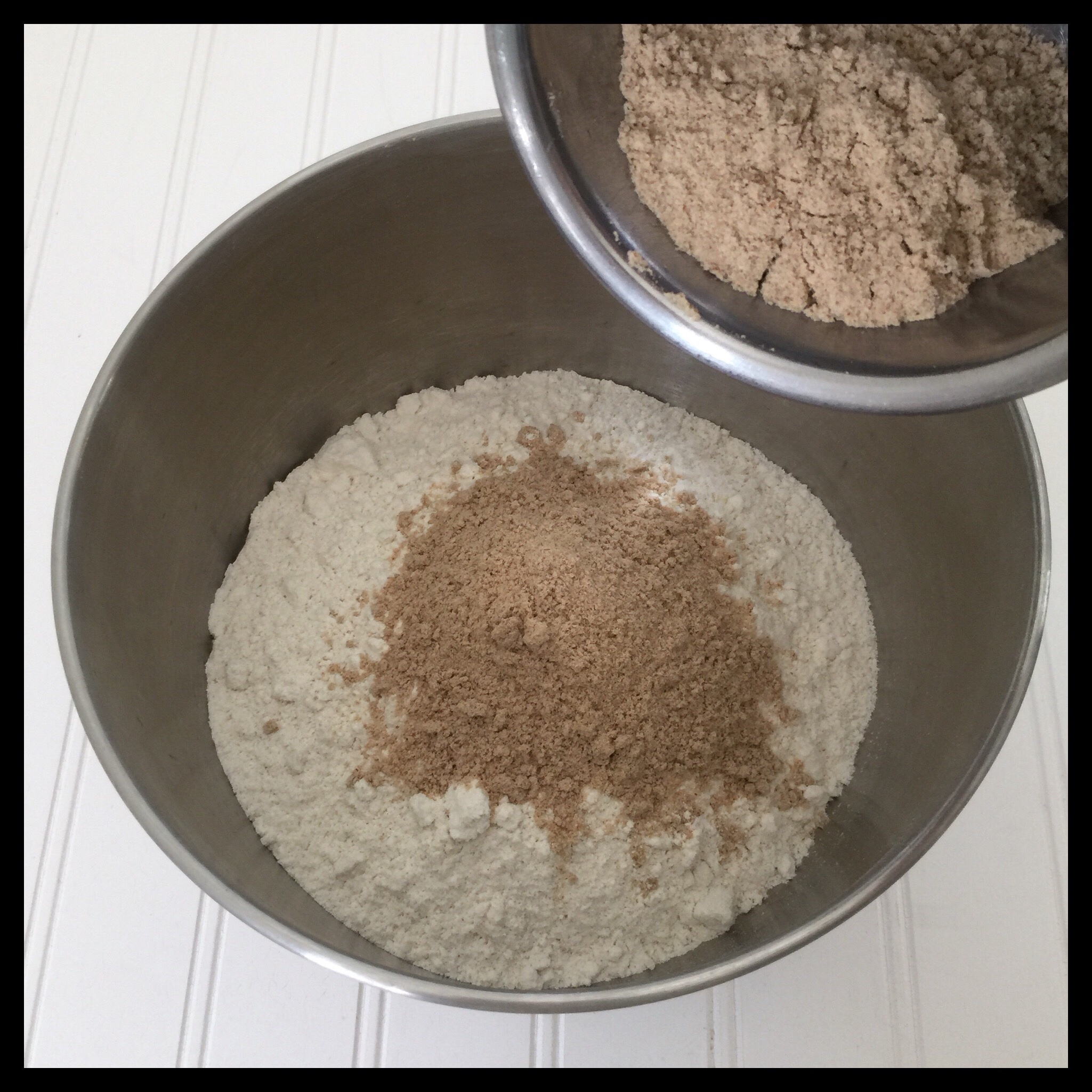
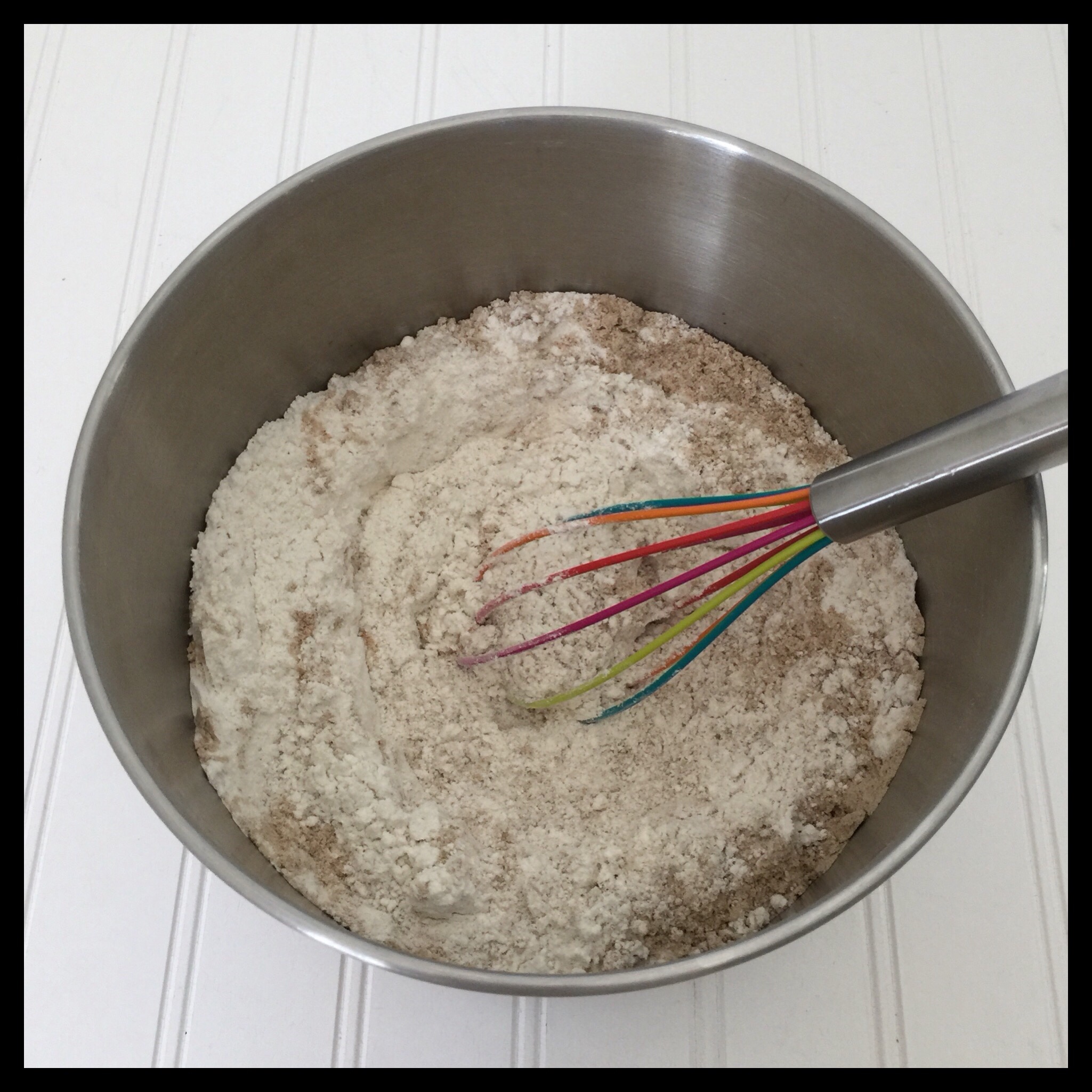
Once those are thoroughly blended, add the Bob’s Red Mill flour and whisk again:
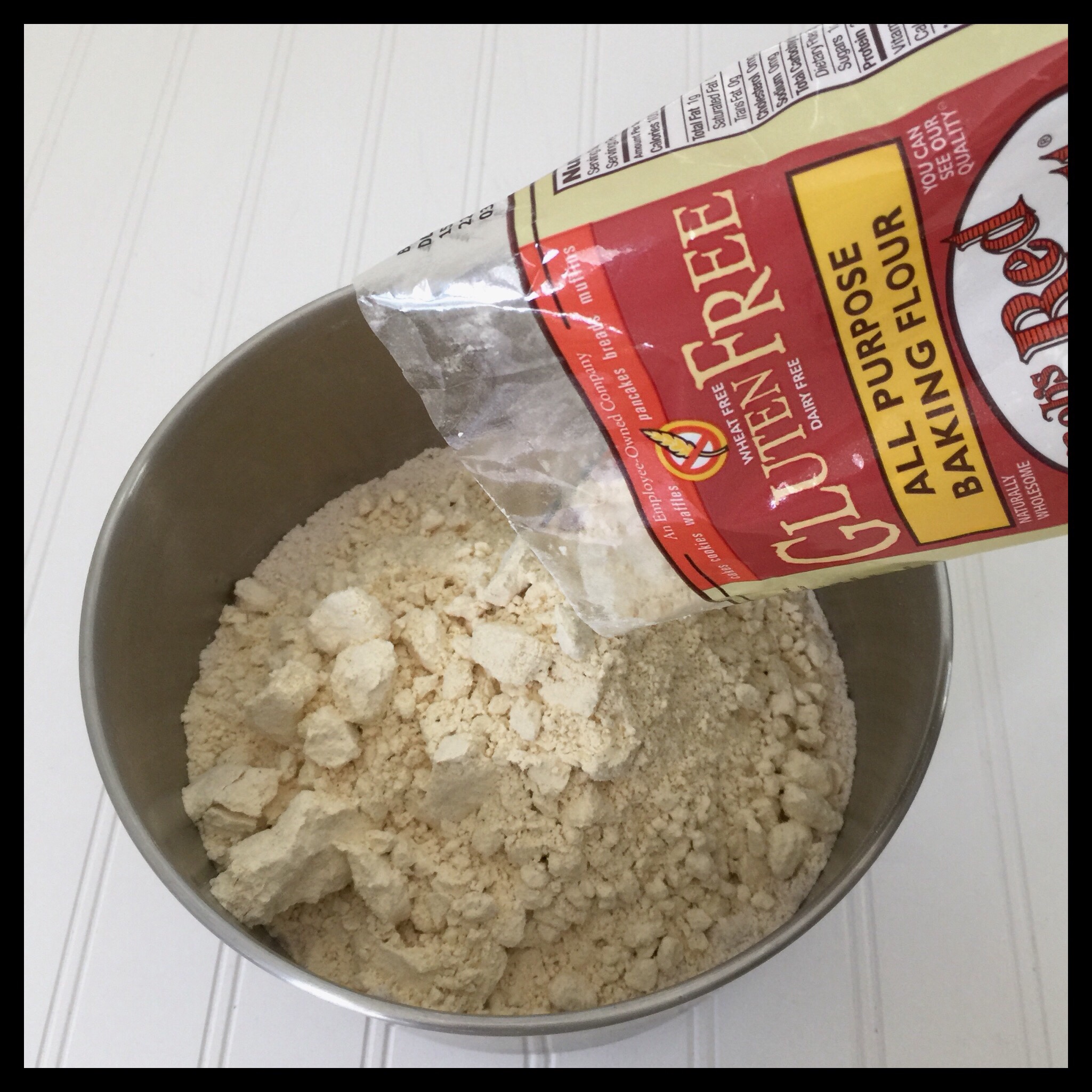
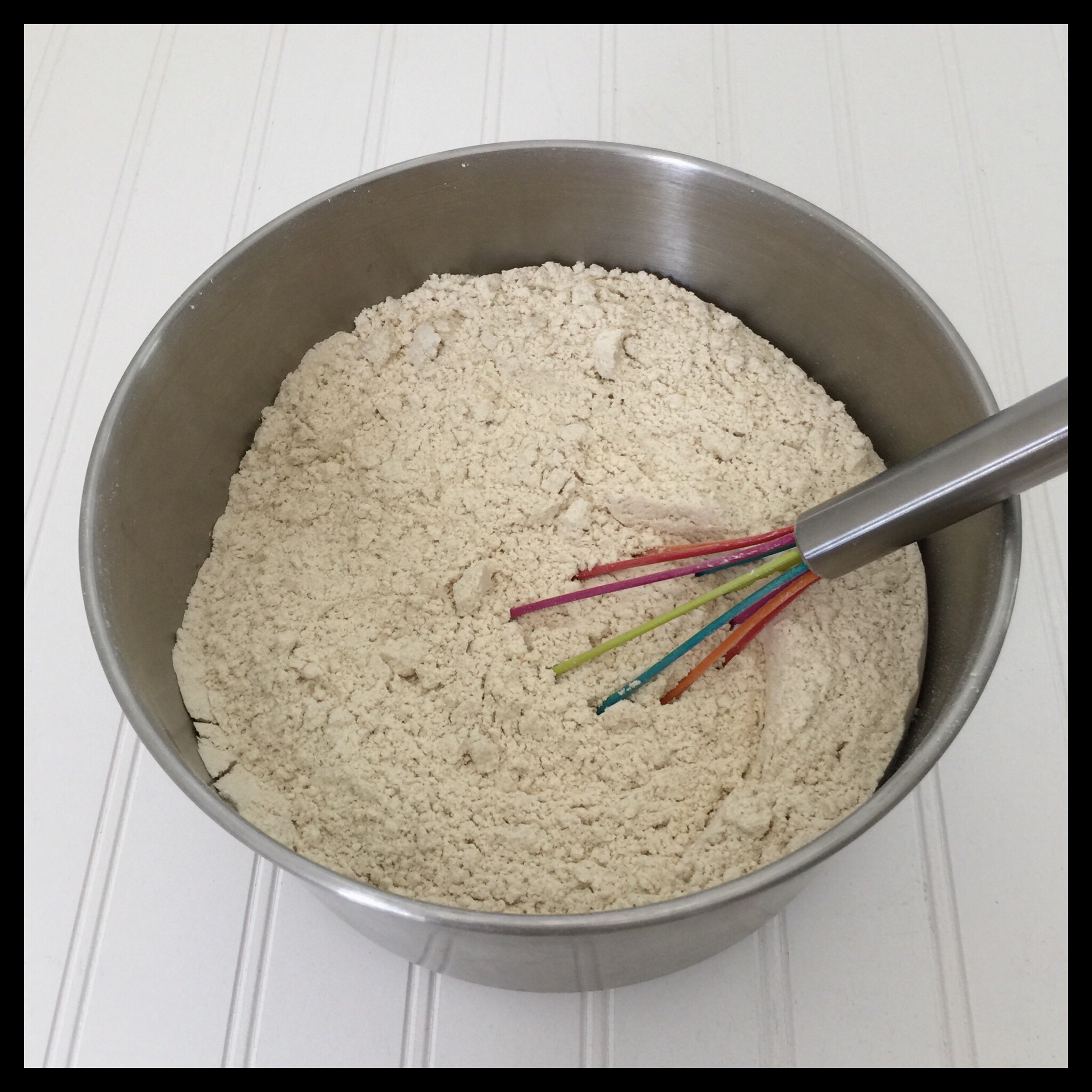
Store in an airtight container:
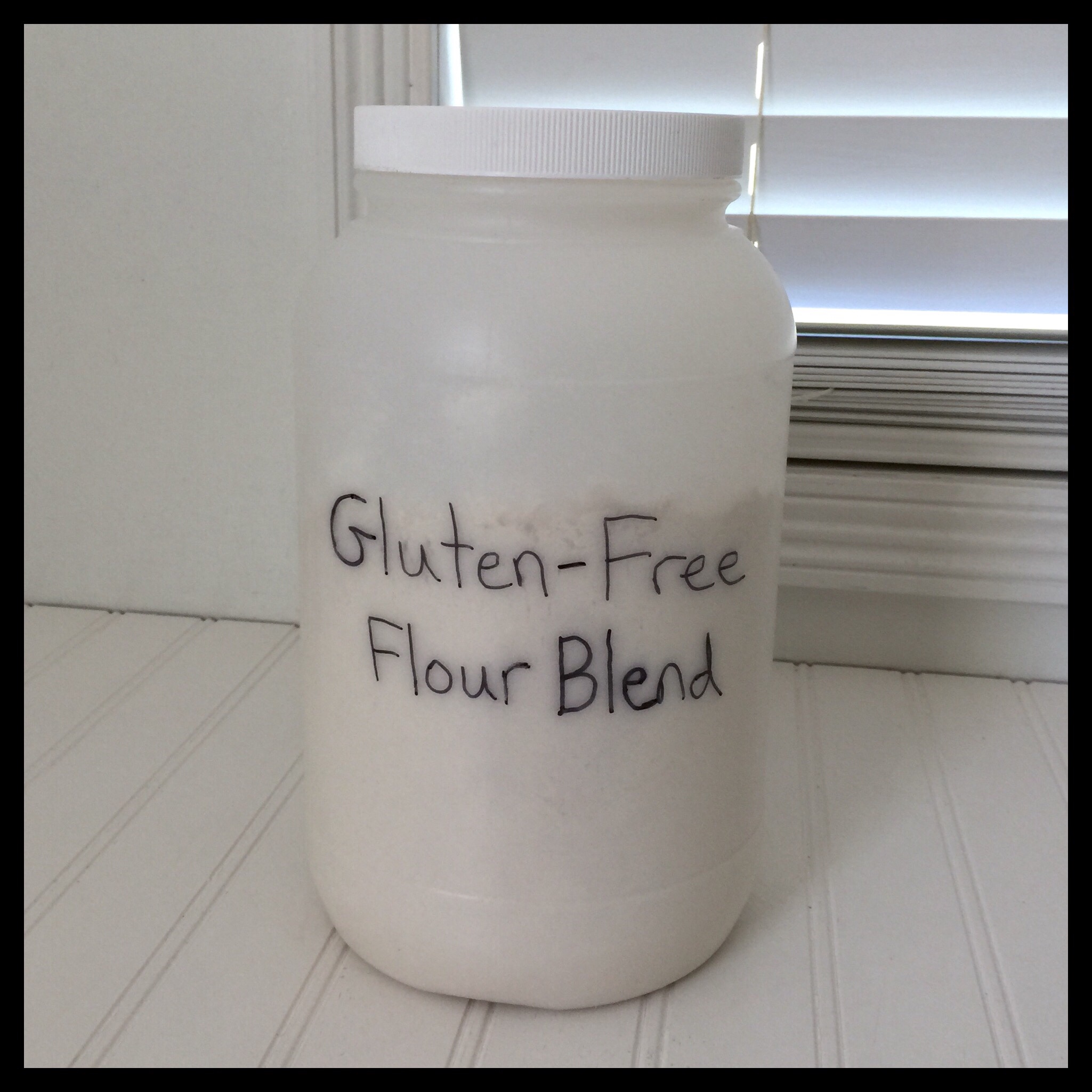
I am thrilled to finally be able to share this incredible product with you! The Plant Based Egg truly revolutionizes both gluten free and vegan baking, and I can’t wait to share all of my recipes with you! Here is a preview of just a few of them!
https://animoto.com/play/WRqKBQ2NPjCOjMiAeSxl9A
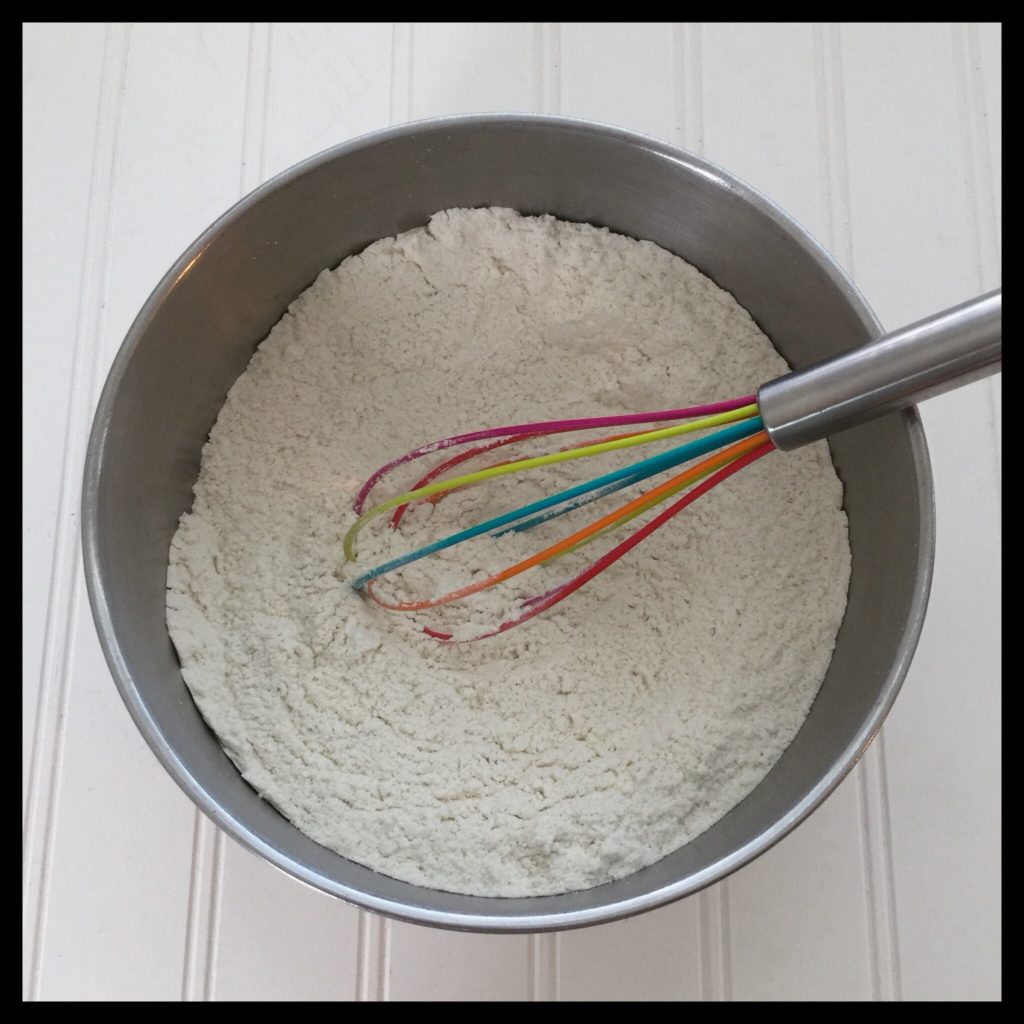
Thank you for your meticulous work and wonderful recipes!
Aren’t tapioca flour and cassava flour the same thing?
I’m so glad you like my recipes, Heidi! Tapioca flour and cassava flour are not the same, although they are from the same plant. Tapioca flour is really tapioca starch (the names are interchangeable), but cassava flour is made from the whole root and is not just the extracted starch. You can order Otto’s cassava flour right from their website if your health food store doesn’t carry it: http://www.ottosnaturals.com/. It is less expensive at Thrive Market and it’s on sale at Vitacost right now: https://www.vitacost.com/ottos-cassava-flour-gluten-free
Is it to my understanding that the Plant Based Egg is not available for sale yet? Doctor just recently told the BF NO MORE Gluten, he is missing his sandwiches and toast so much.
He doesn’t have to miss out any longer! Our online store is not up yet, but you can order now by emailing theplantbasedegg@gmail.com!
Just a quick question…..do any of your flour mixes meet the keto or low carb guidelines? I am so excited about finding your Plant Based Egg and look forward to ordering it soon. Thank you for your many, many hours of testing you did to develop this product and recipes!!!
Thank you! I’m excited for you to try The Plant Based Egg! I have not tried any low carb recipes, but I know of a few people who have, and they said The Plant Based Egg worked well for them.
Hi Deborah,
Wondering if you had every substituted a different starch for potato starch? Arrowroot, tapioca? We don’t use any of the inflammatory trigger foods here at the lodge
Hi Peg,
I do have four blends (11, 13, 14, and 15) that are potato free. I use a combination of tapioca and arrowroot starches in those blends. If none of these work for your needs, let me know what ingredients you can use and I’ll see what I can do!
I think I am remembering that you also suggested mixing 2 boxes of Vitacost with 1 bag of your plant egg as flour option…measuring flour mixture per recipe. I don’t see that listed here. Am I mistaken? Gretchen sent me to your site for Vegan and GF recipes.
This is the post you want! https://www.vegankitchenmagick.com/fabulous-two-ingredient-gluten-free-flour/
Will Flour Blend #7 work for all of your recipes? Waiting for part 3 installment on Gf bread making and recipe. I have ordered your Plant Based Egg replacer and it should be here tomorrow’s. I am so looking forward to using it and for your additional recipes!
Maggie
Hi Maggie!
Blend seven will work in all of my recipes, but the things you bake with it will be a bit darker than they would be when made with a blend without oat flour. It’s a great choice, though, as long as you’re ok with that. (Part 3 and new bread recipes really are coming up soon!)
Blessings,
Deborah
Thank you so much. The eggs replacer came yesterday so I am anxious to use it.
Blessings to you,
Maggie
I hope you love your new flour blend, Maggie! Please let me know if you have any questions as you are baking. I do recommend always weighing your ingredients and at least starting with my recipes until you get a feel for how flour with The Plant Based Egg works.
I just made the Vegan gluten free sandwich rolls with the #7 gf flour blend. They turned out wonderful. The dough was a little sticky so I added about 3 T extra flour. Thank you so much. Now I am really anxious for your sandwich bread recipe and part 3 .
Maggie
I’m so glad you liked the rolls, Maggie! Sandwich bread coming up soon!
Hi! I’ve been looking for DIY gluten free flour blends on Pinterest, and found a pin to this article. So excited to write some of these down! I’m not vegan–not at all–but I love the idea of using your plant based egg simply because xanthan gum is so expensive, and the non-gum alternatives are confusing, and, if I add the appropriate amount of your plant based egg to a flour blend which will then be used in, say, a DIY pancake mix, I may only need to add water. Perfect for a Shake and Pour copycat! Thanks for all your hard work! ((I will post a second comment on what kinds of things I’m hoping to use a flour blend for, so I can get your recommendations of which is best))
Ok now for your recommendations: the baked goods/mixes I’d probably use one of your blends in are: yeast breads, quick breads, cakes, pancakes, cookies, cornbread, and an all purpose blend for a roux or a cream of __ soup. Thanks!
Hi Sarah! For all of the mixes you mentioned, Freely Vegan flour with The Plant Based Egg already added is going to work the best. I shared all of these DIY blends before it was available and none of them work as well. This is because I was trying to keep the recipes fairly simple and give my readers a way to make gluten free flours at home long before the Freely Vegan flour was available. Freely Vegan flour is designed to work with The Plant Based Egg and all of the ingredients were sourced individually. They are the perfect fineness and work together beautifully. That said, if you still want to make your own blends, I would only use the two-ingredient flour for yeast breads, blend 2 for quick breads, cornbread, and cakes, the two-ingredient flour for pancakes, the two-ingredient or blend 7, 8, or 9 for cookies, and you can use just plain oat flour or sweet white rice flour for a roux (no Plant Based Egg needed.) For cream of soups, I usually use cornstarch or will make a roux as just mentioned. I hope this helps! (You can get the new Freely Vegan flour at freelyvegan.com or on Amazon https://www.amazon.com/dp/B07NJ23WW4
Thanks! However I didnt intend to ask for one blend to cover all the purposes, but rather which one would be best for each. To recap/refine, I would like recommendations for the best blends for each category: breads or doughs that require lots of rise and/or need to stick to itself well (like pie dough), bread products that require little or no rise, and cakes and/or cookies. Not one flour to accomplish all of them, but rather which ones are best for each individual category.
(I’m so used to giving too much information and having to trim down The Wall of Text that I must have left out some important details of what i wanted in my last comment. Sorry!)
Hi Sarah,
You weren’t unclear at all! I still stand by my previous answer, though. All of the blends on the post are meant to be all-purpose blends, and not specific to one type of recipe. (I have noted the ones that don’t work at all for yeast breads, or that are better for certain recipes.) That’s why I said that the Freely Vegan flour will work best for all the types of recipes that you mentioned. It really is that good and works beautifully in all of my recipes! I will let you in on something I haven’t mentioned on the blog yet, though. Freely Vegan will be launching a specialized bread flour in about six to eight weeks that makes even more awesome bread than the Freely Vegan all-purpose flour. The all-purpose flour had to work for all recipes and I couldn’t make it quite as light as I prefer for breads if I also wanted it to make perfect cookies, muffins, and brownies. The all-purpose flour already makes wonderful breads, but the bread flour makes even lighter and fluffier loaves.
Wow! Such good news about the new GF all-purpose flour mix coming out, that makes EVERYTHING !!
I have made bread using your Freely Vegan flour mix and it was real good. Best I have used so far. So very anxious for the next bread flour mix coming out, Keep us posted!
Thank you, Patricia! The bread flour is a little delayed as I had hand and elbow surgery at the end of May. I’m fine but it’s been a very slow recovery. I should be back in the kitchen soon though as the past few days have finally shown significant improvement.
Hi
What can i replace oat flour with, i cant eat oats.
Hi Lee, not all of the blends contain oat flour. It would be best to choose one that doesn’t, or you can order Freely Vegan flour: https://freelyvegan.com/product/freely-vegan-all-purpose-gluten-free-flour/
Hello !!!
Is there any store in Canada, Montreal where I could buy your : The Plant Based Egg product ???
Thank You,
😊
There is! You can find several of the Freely Vegan products at theveganbakers.com
Hi Paul! There was for a few months, but Covid put that shop out of business. We are hoping to have all of the Freely Vegan products available in Canada sometime in 2021.